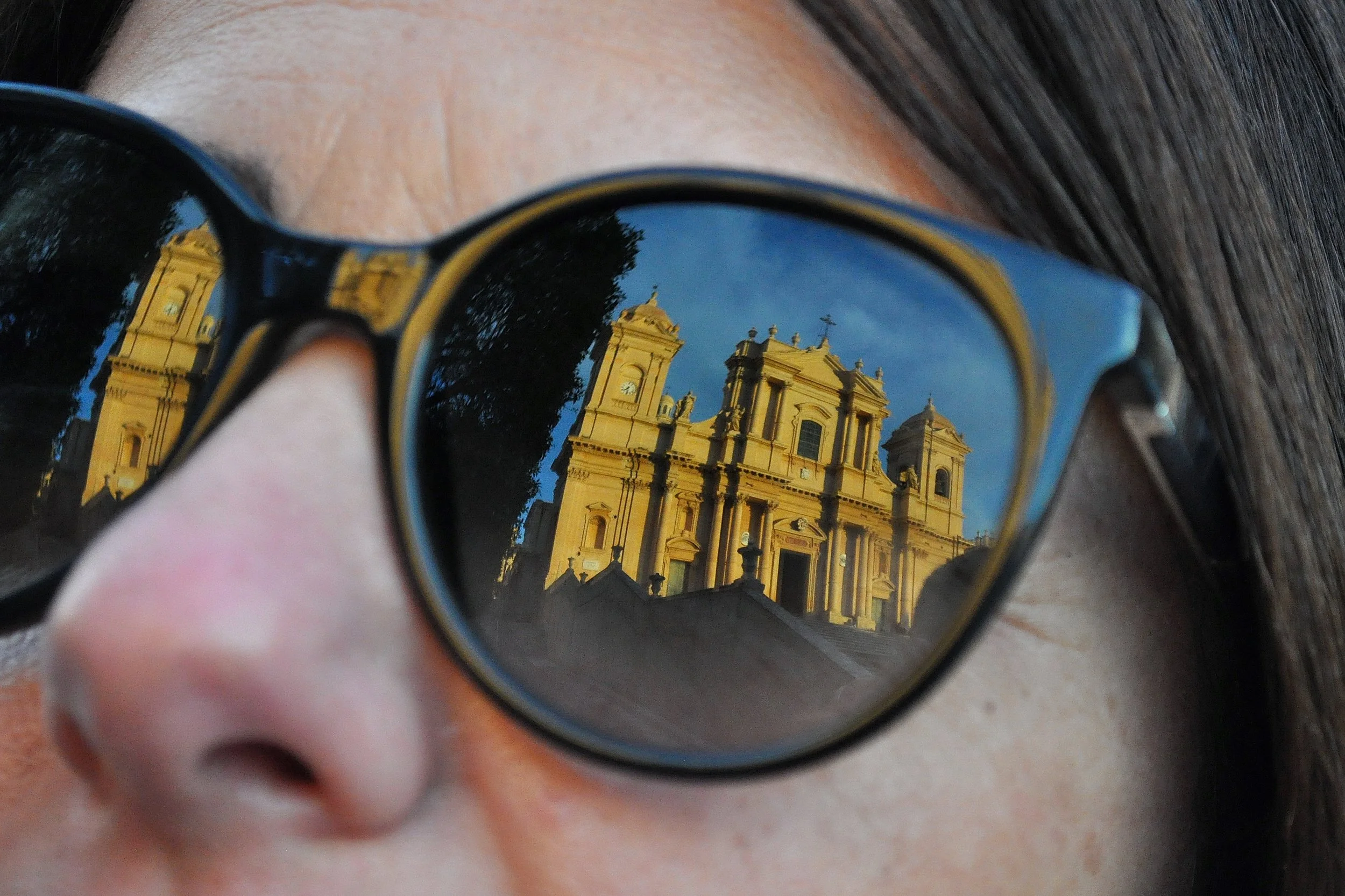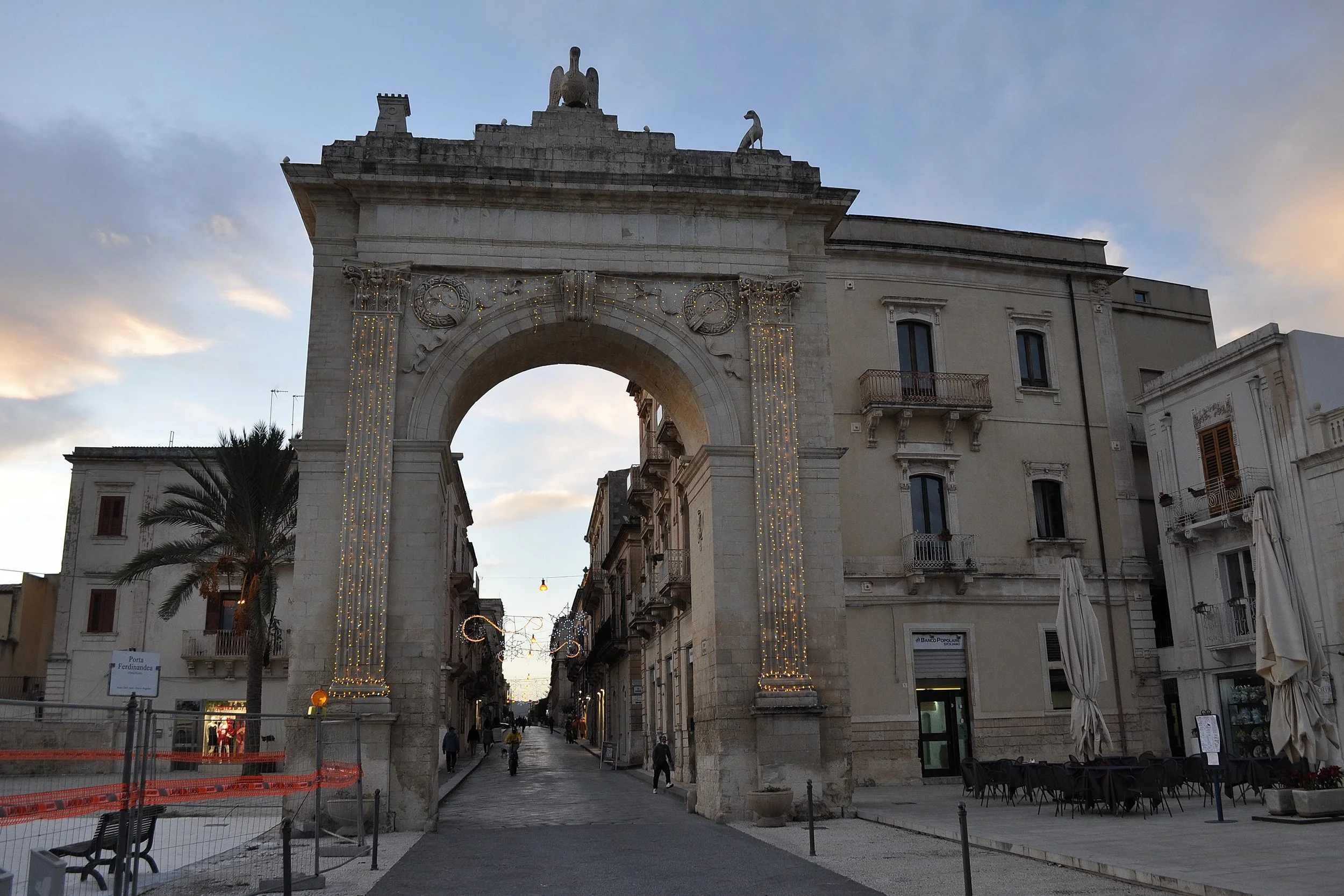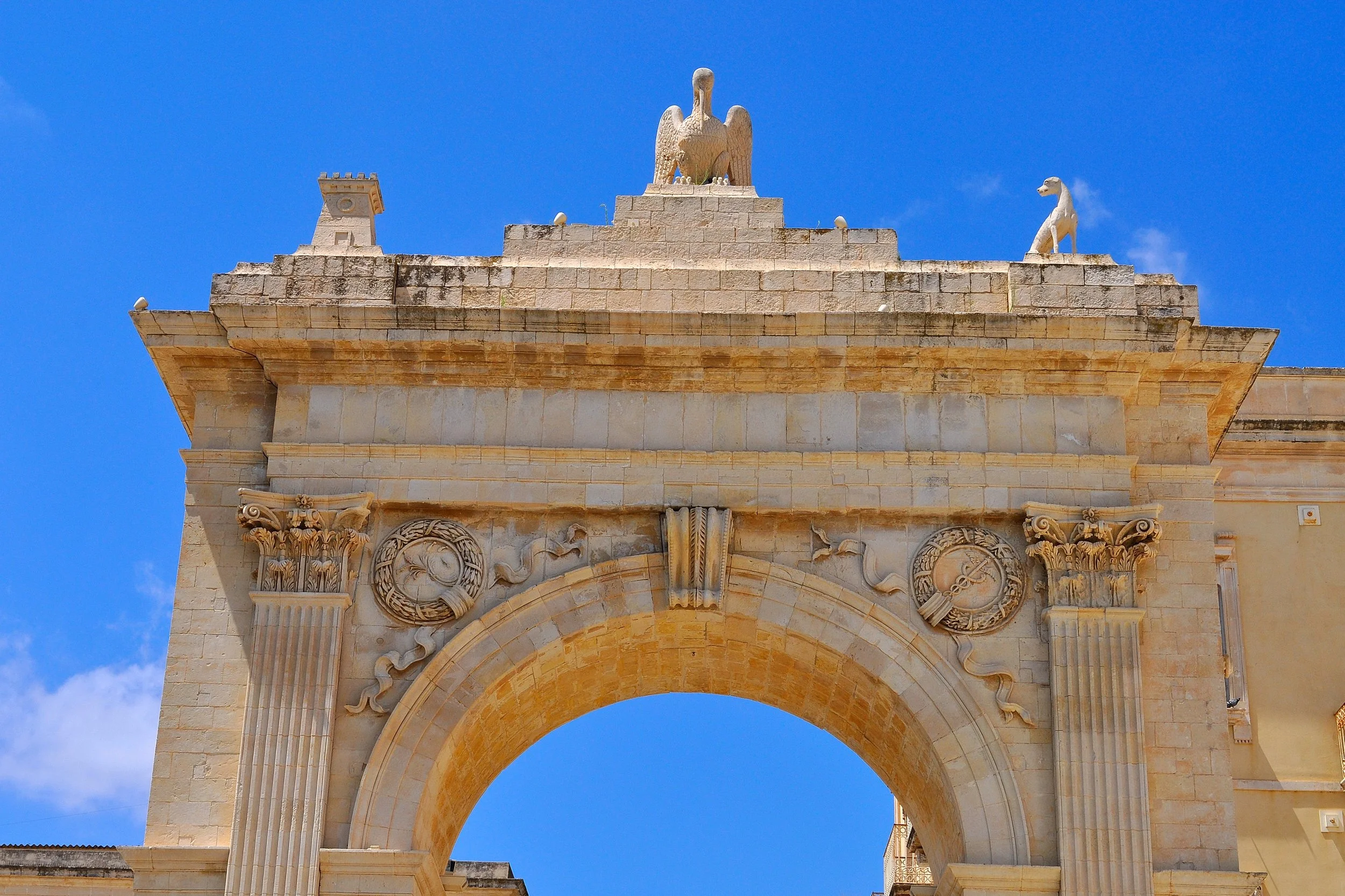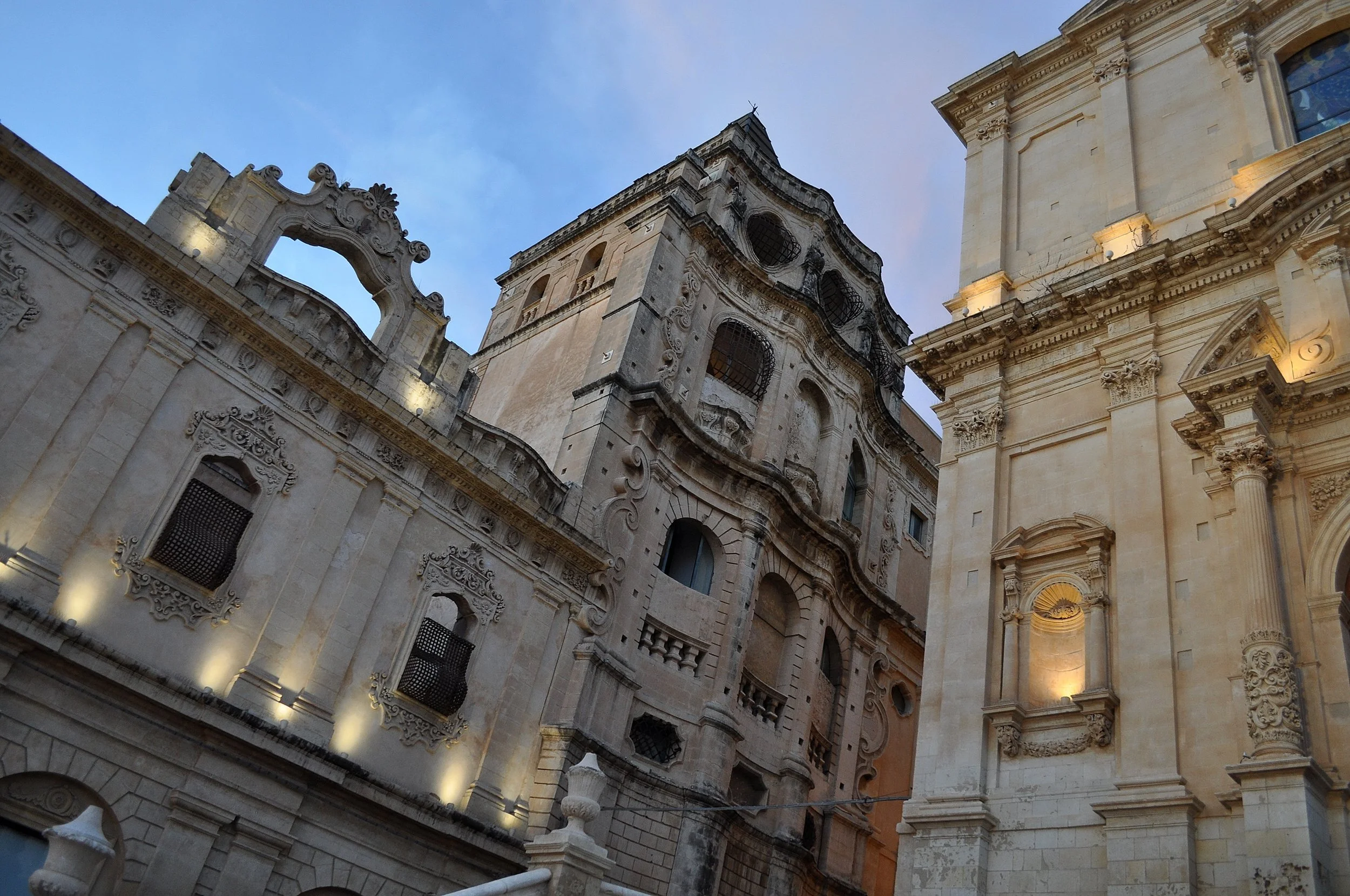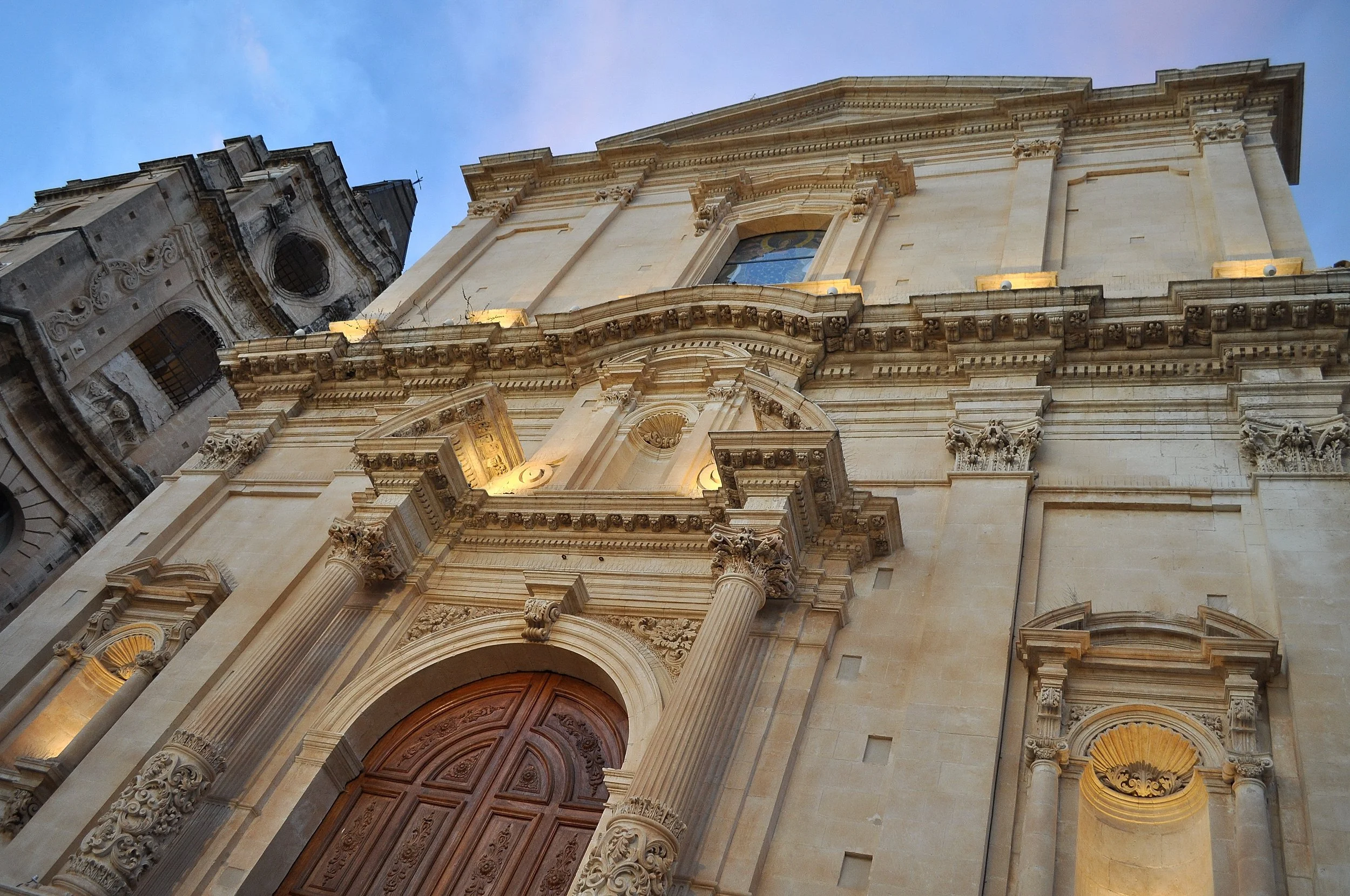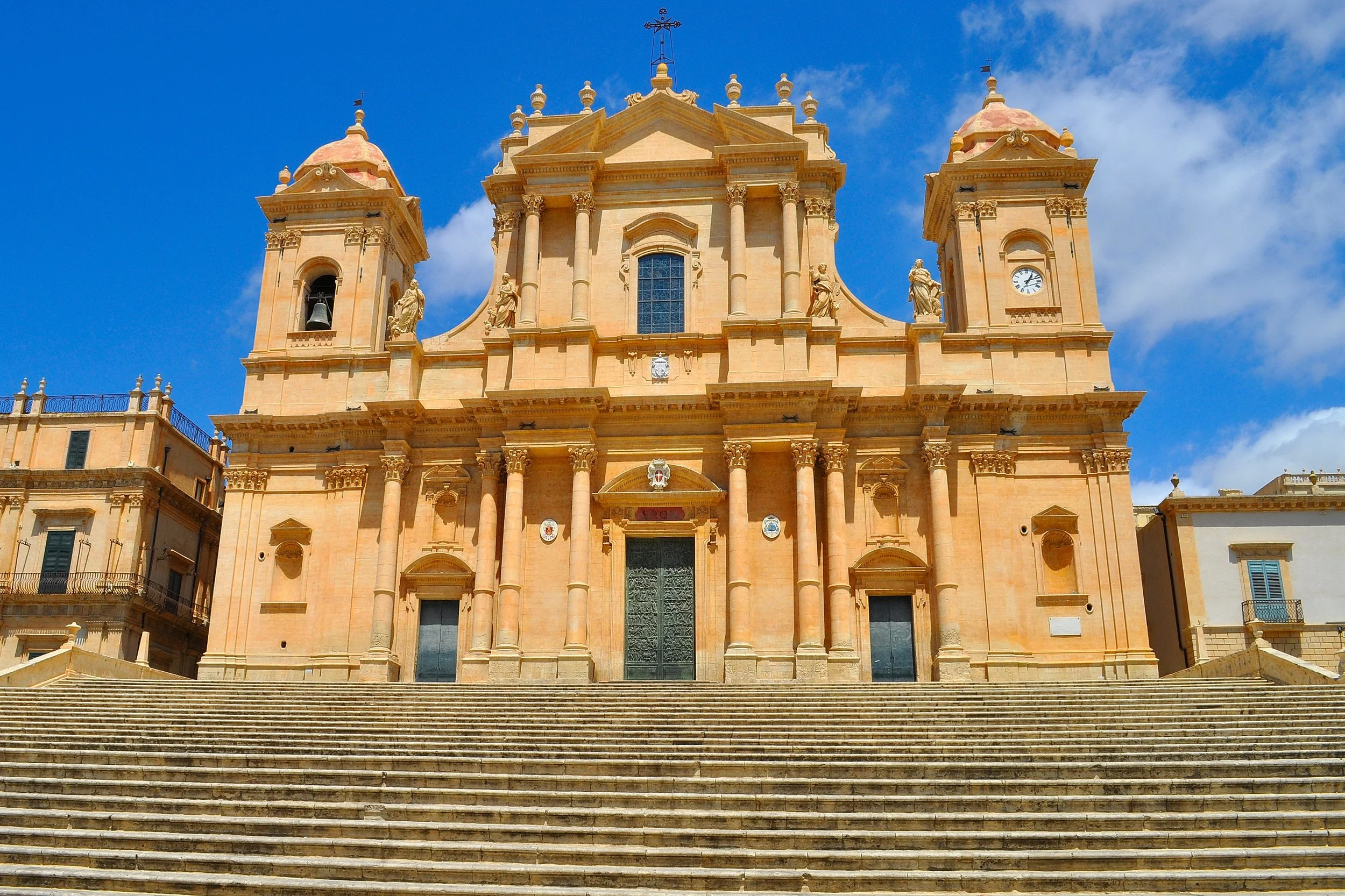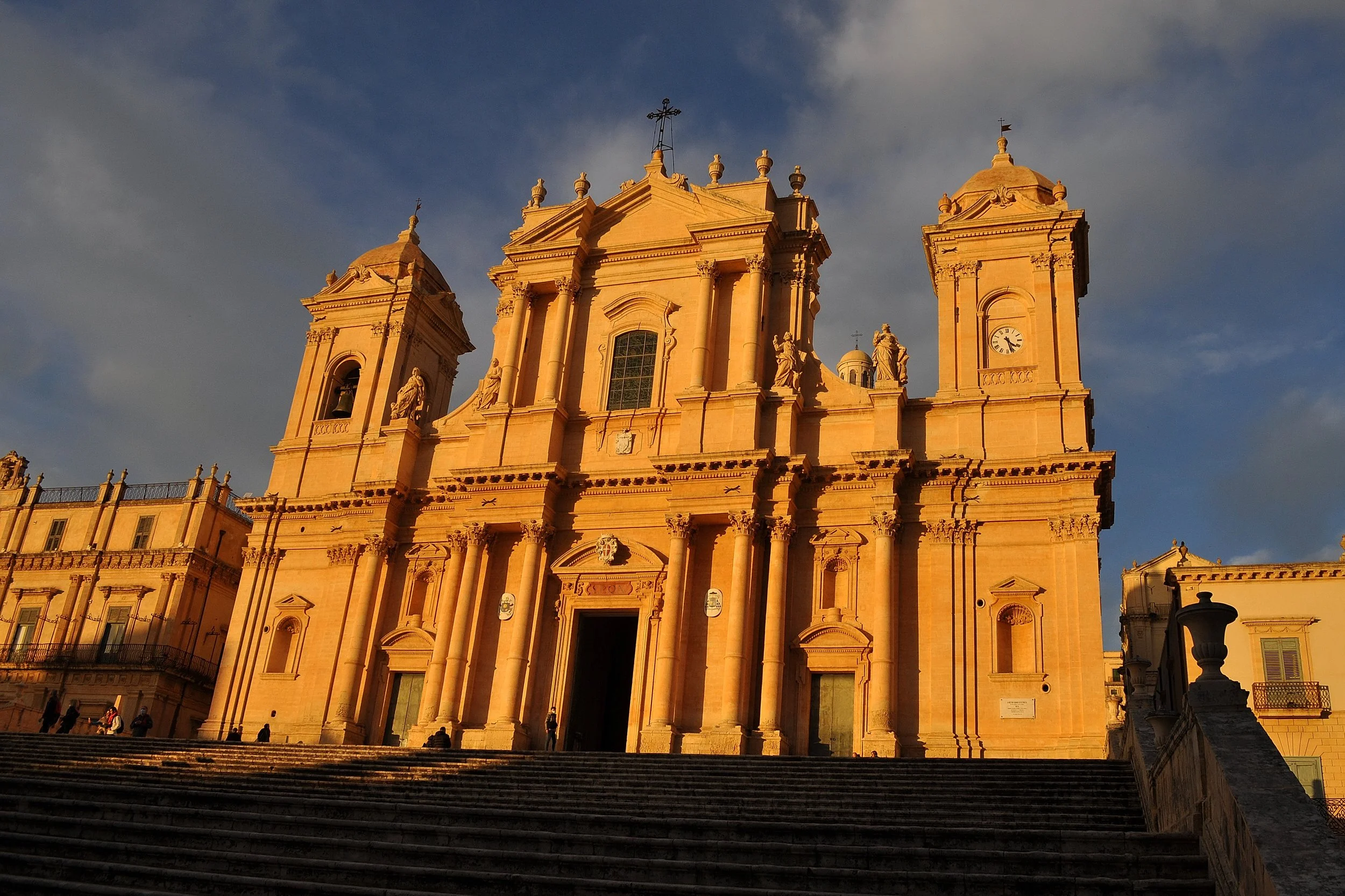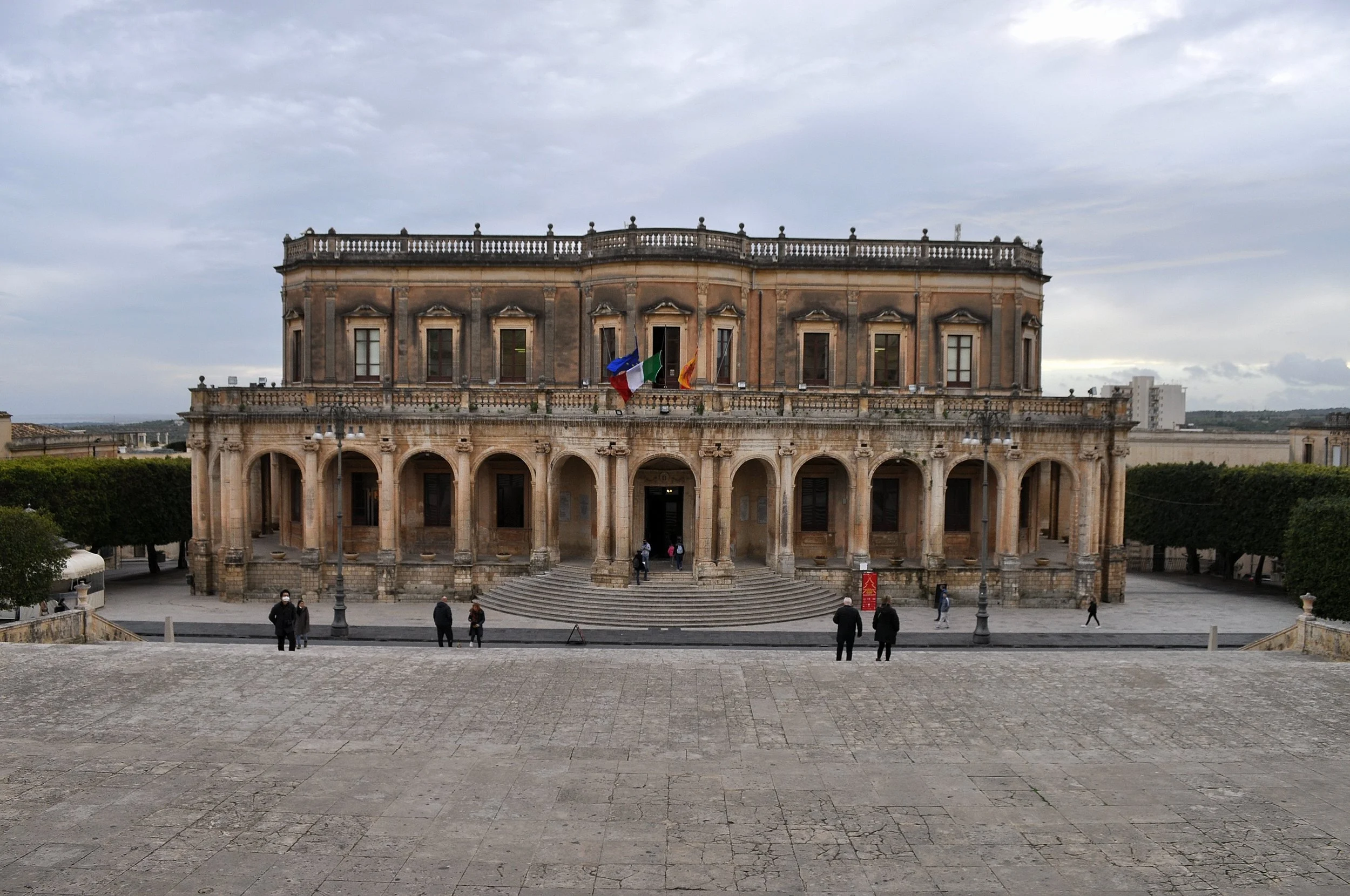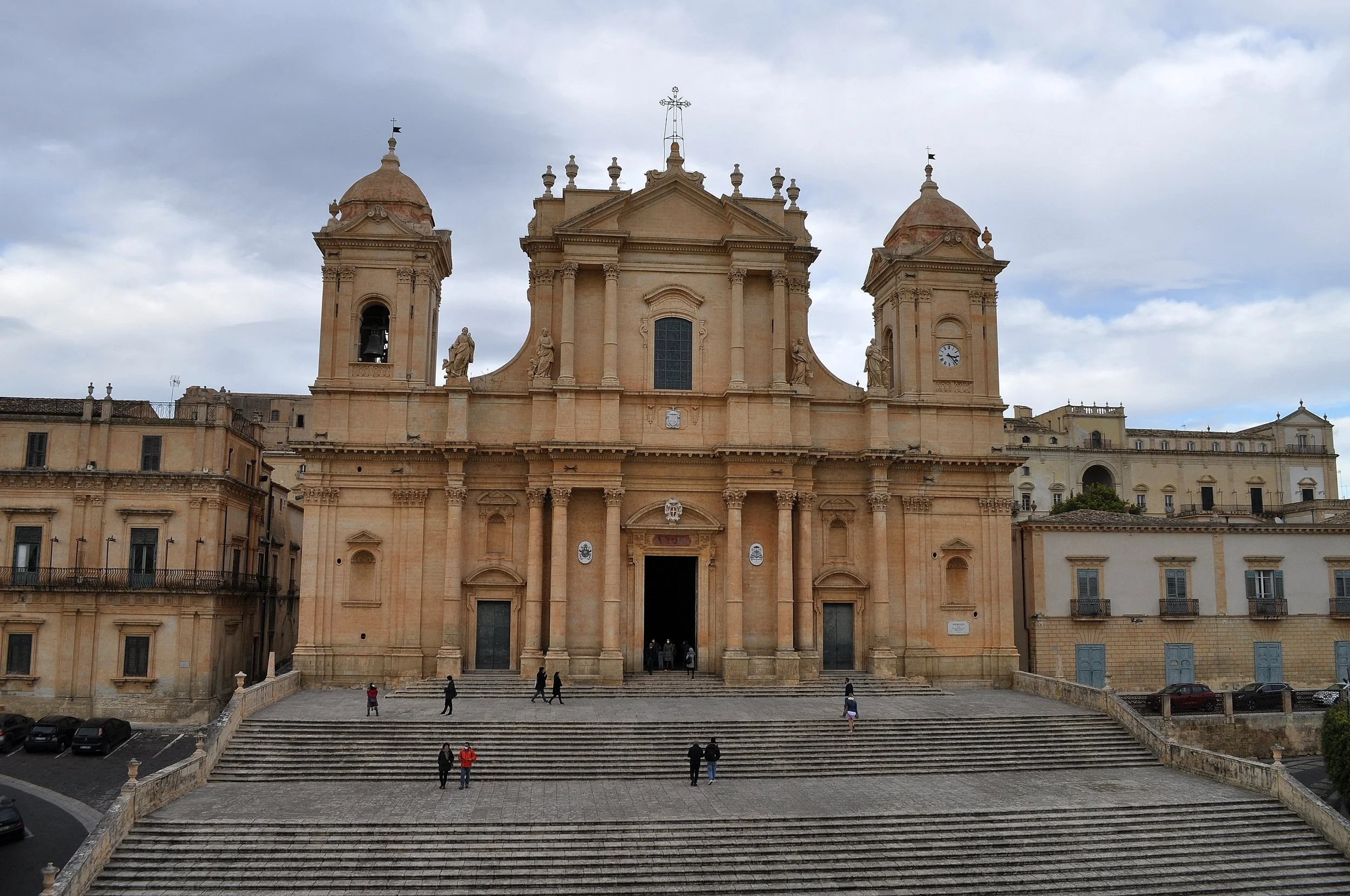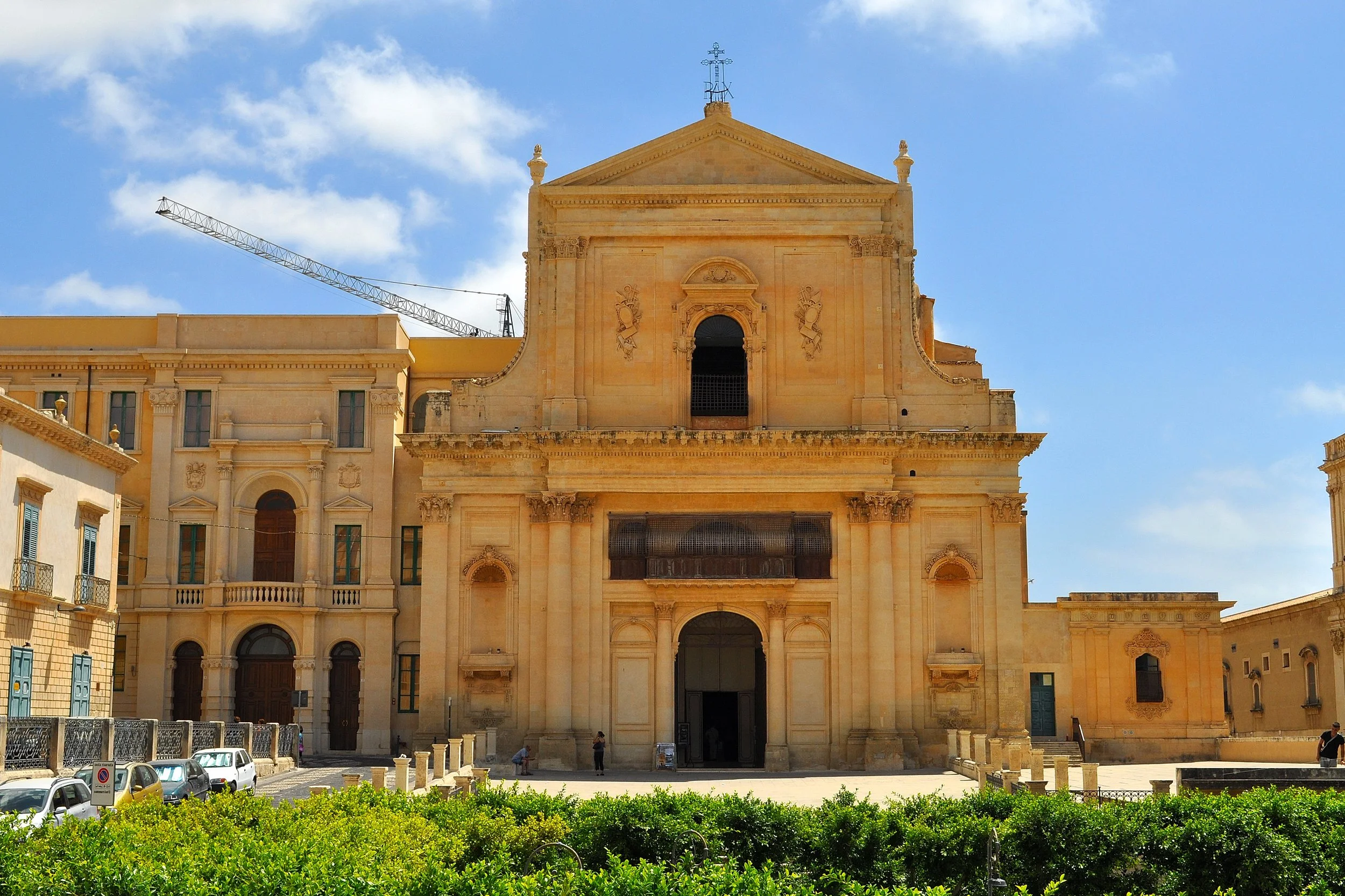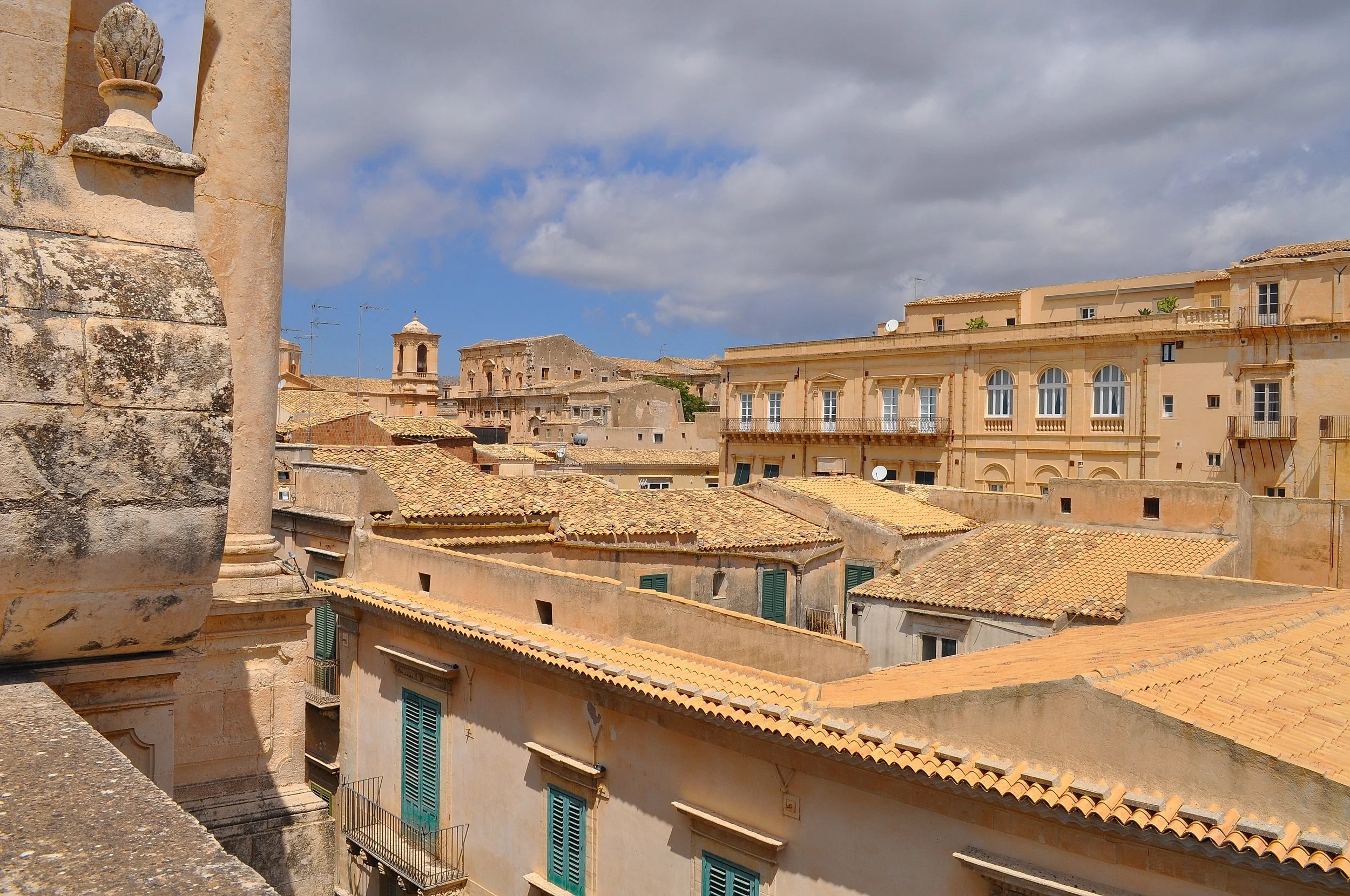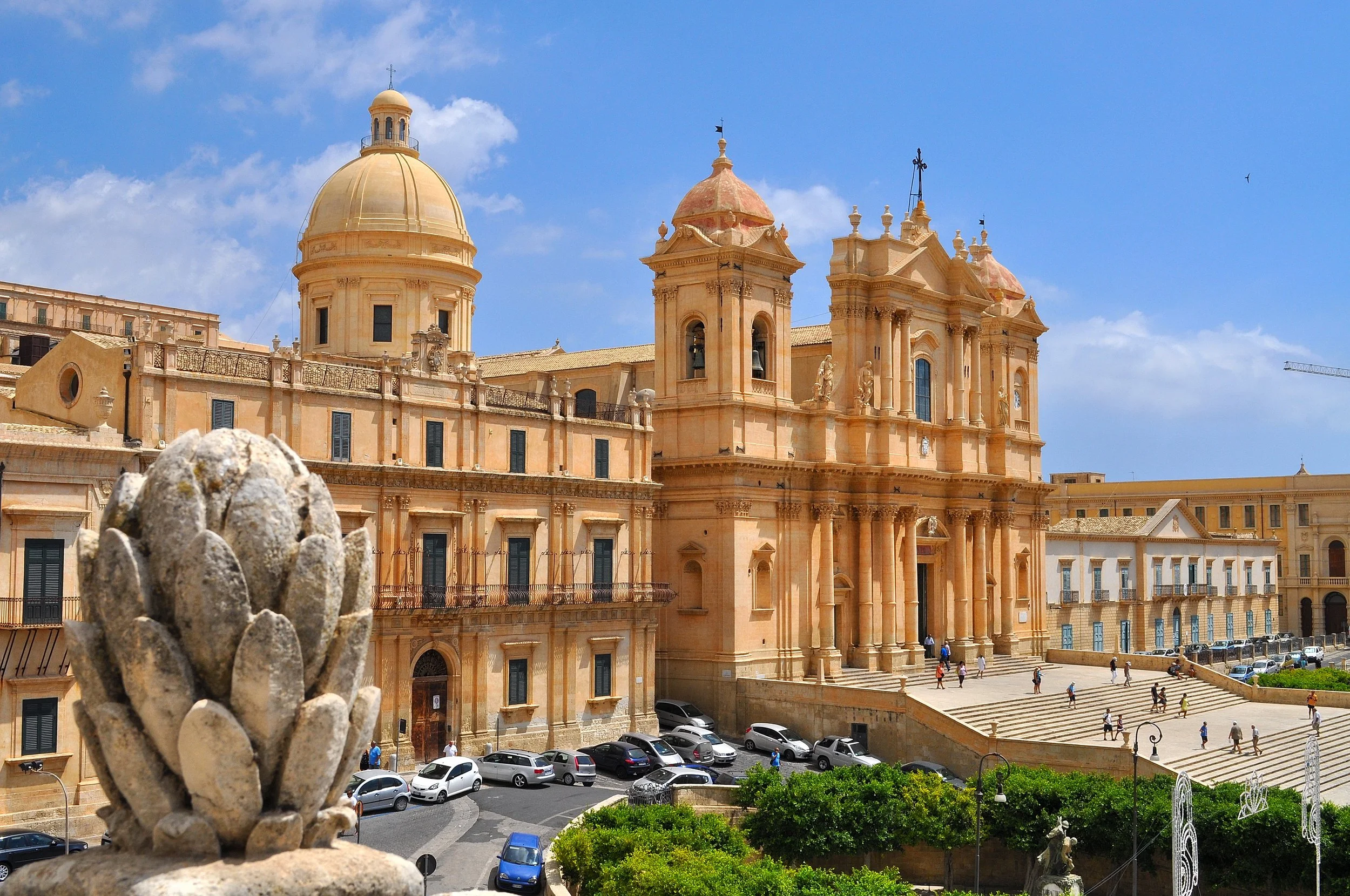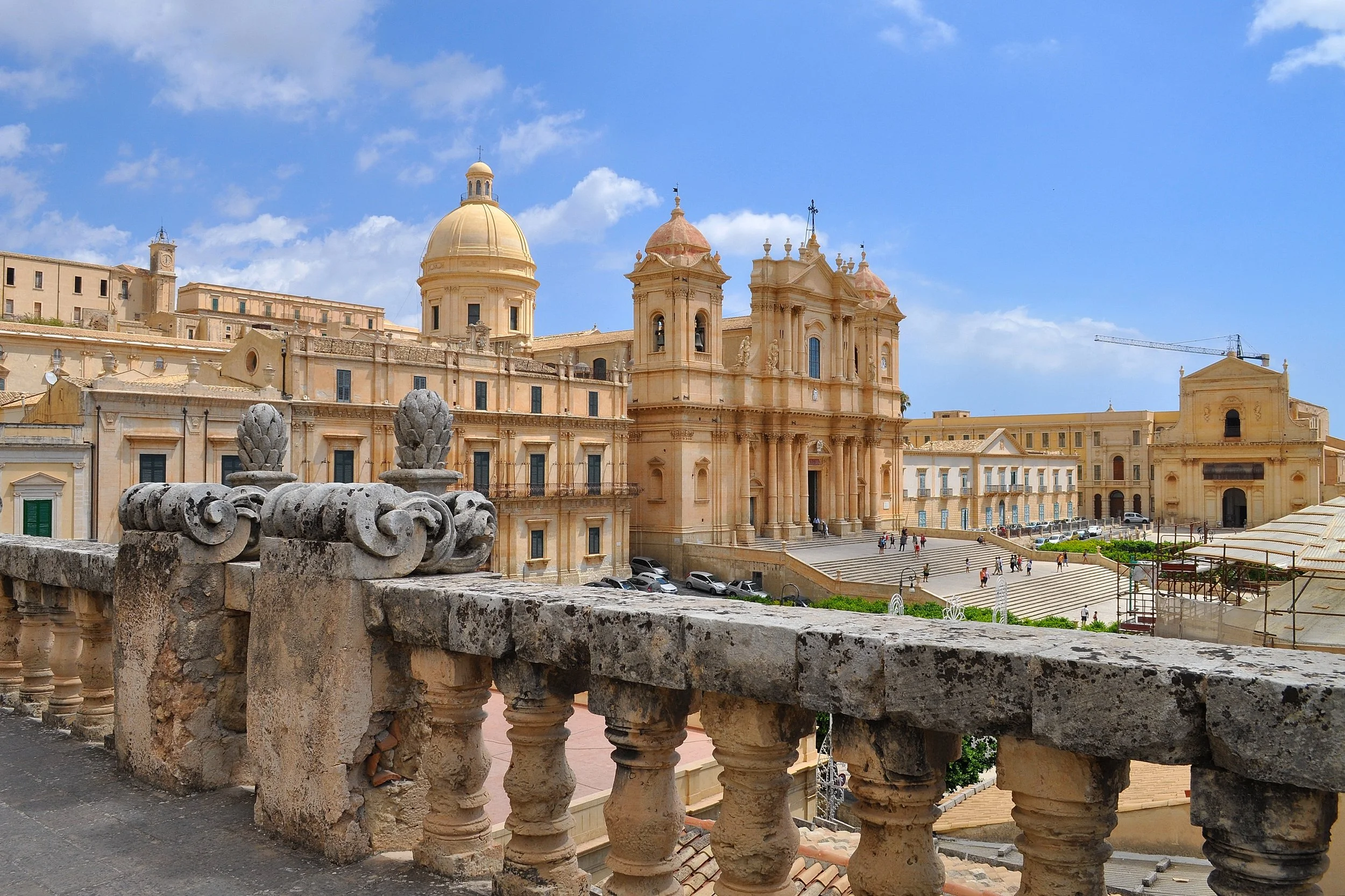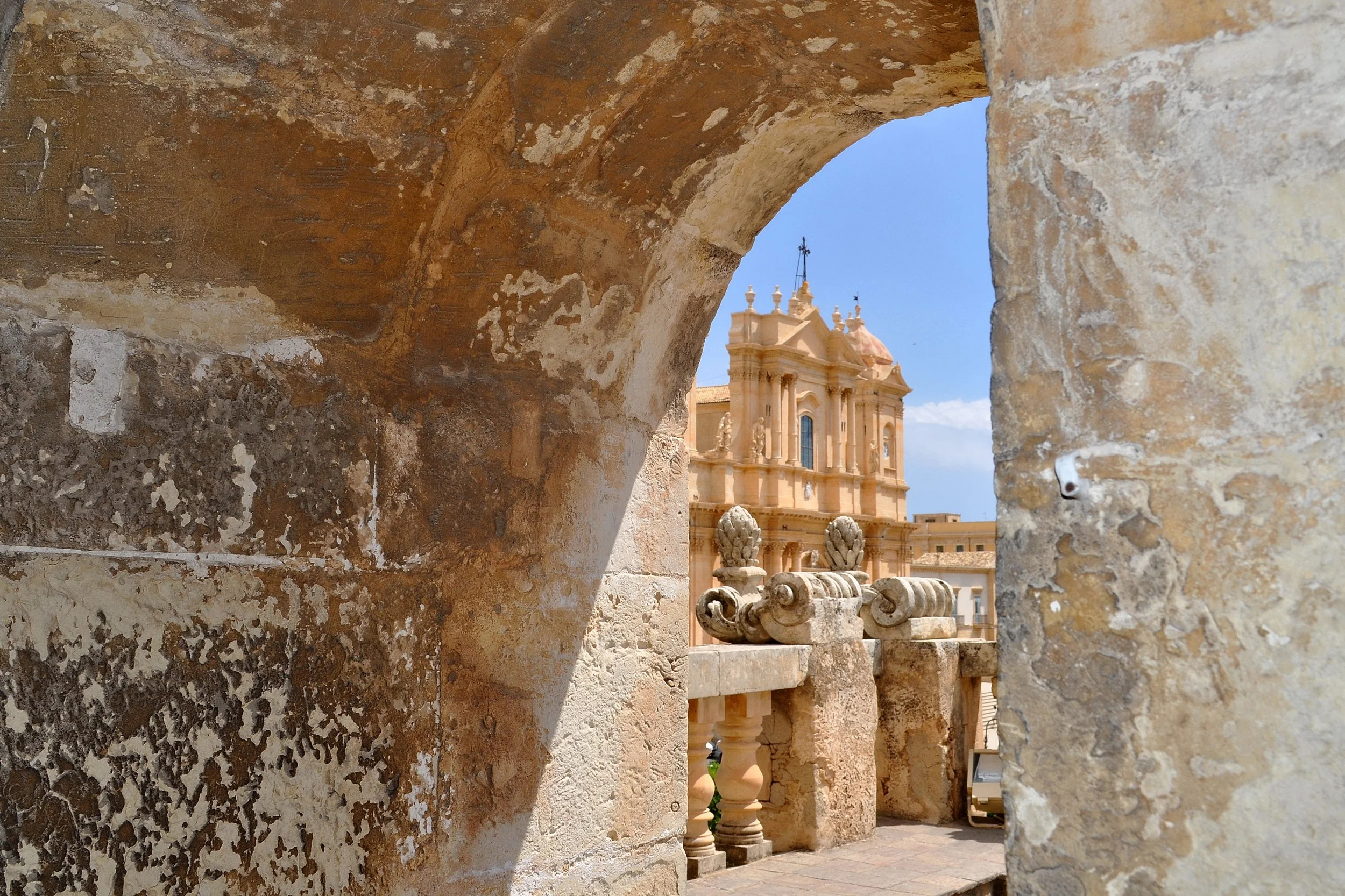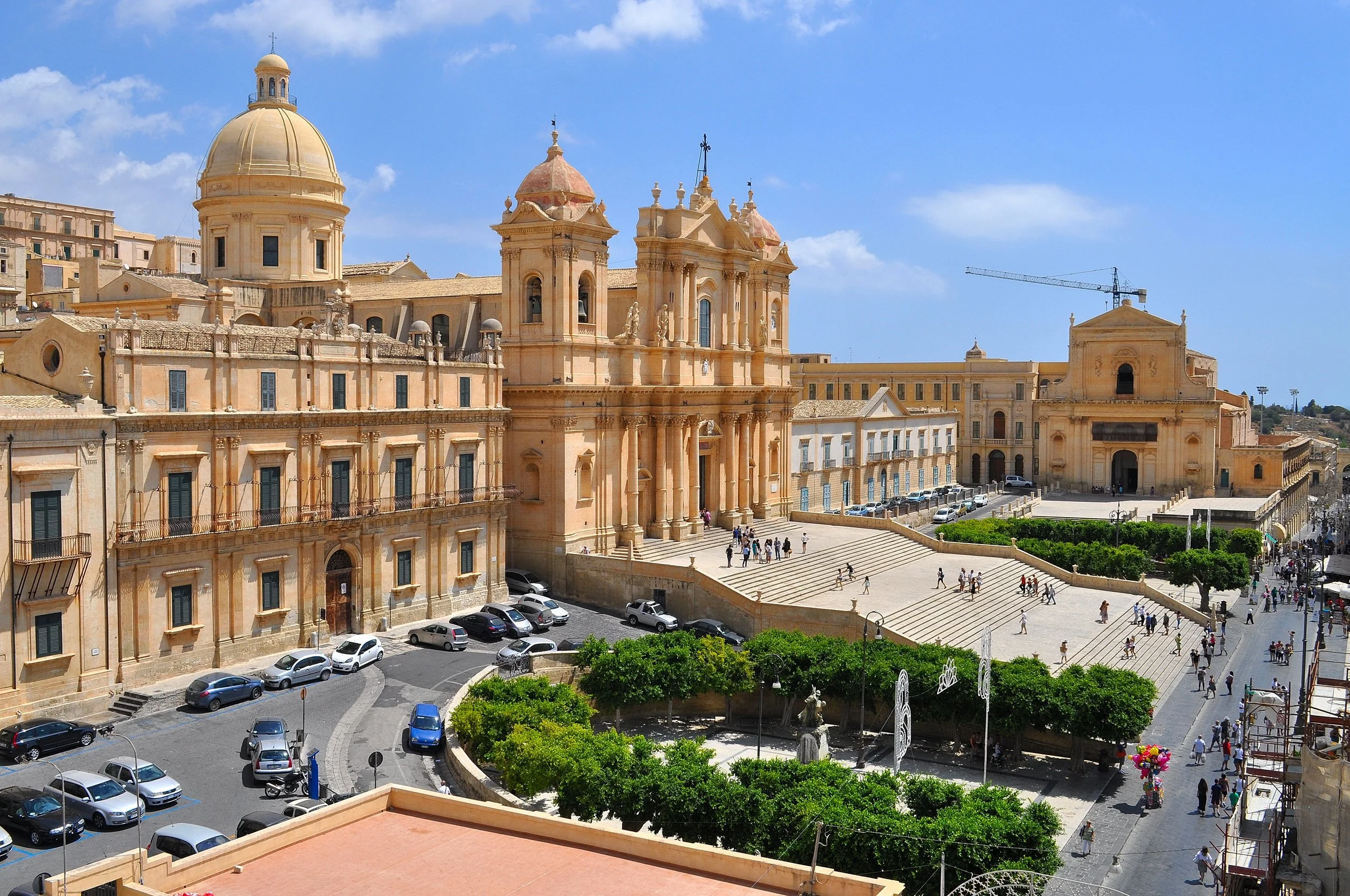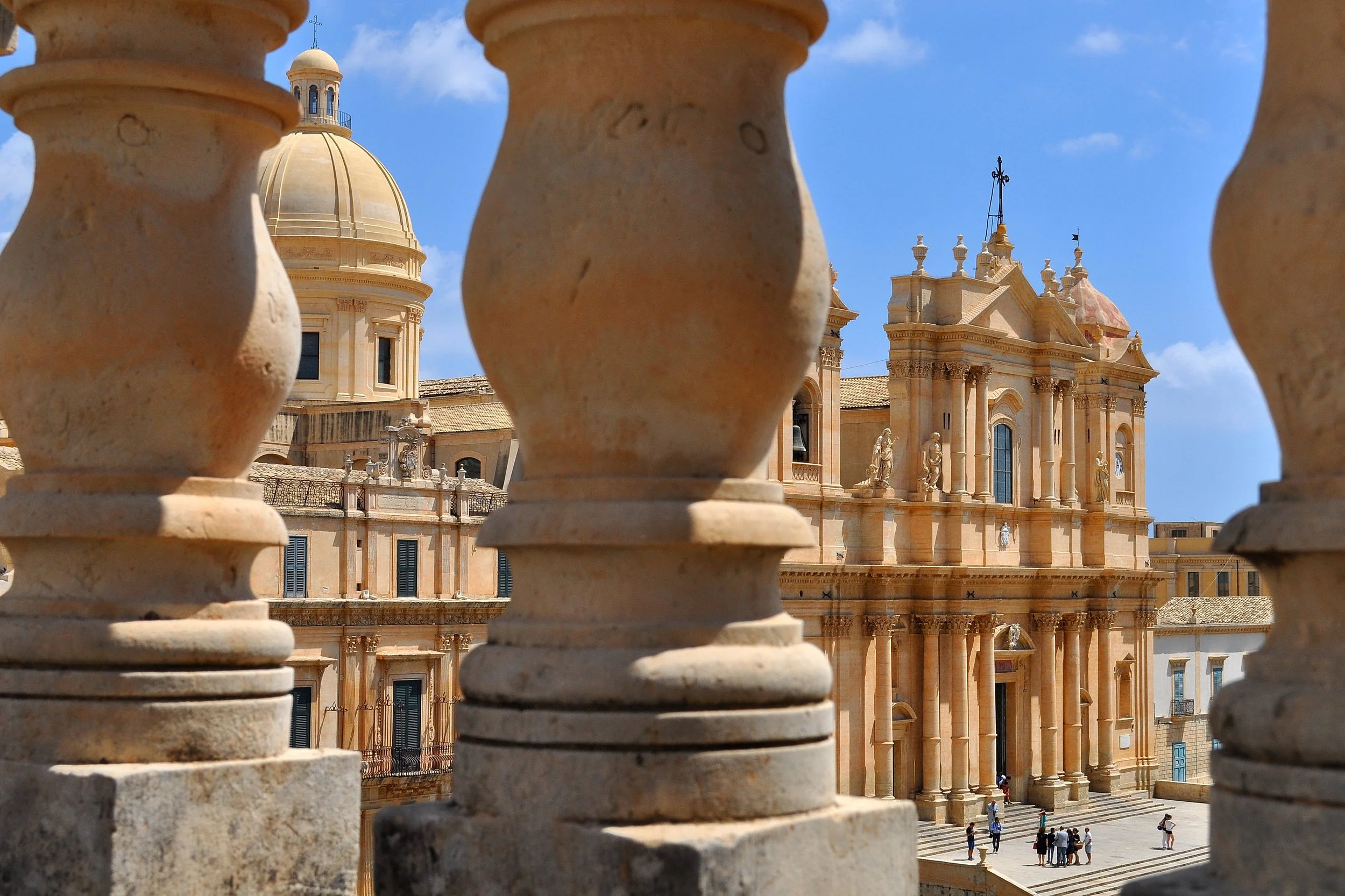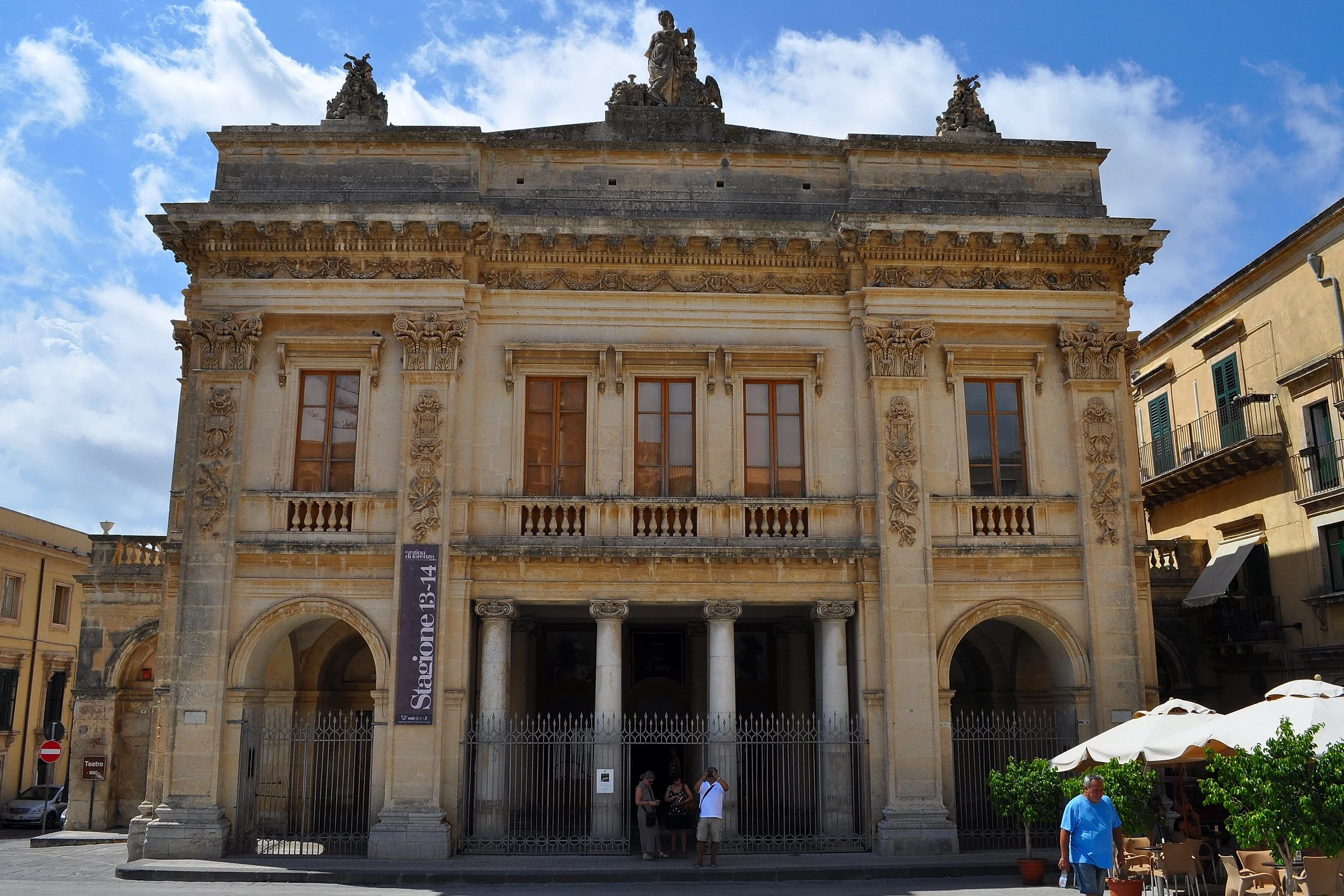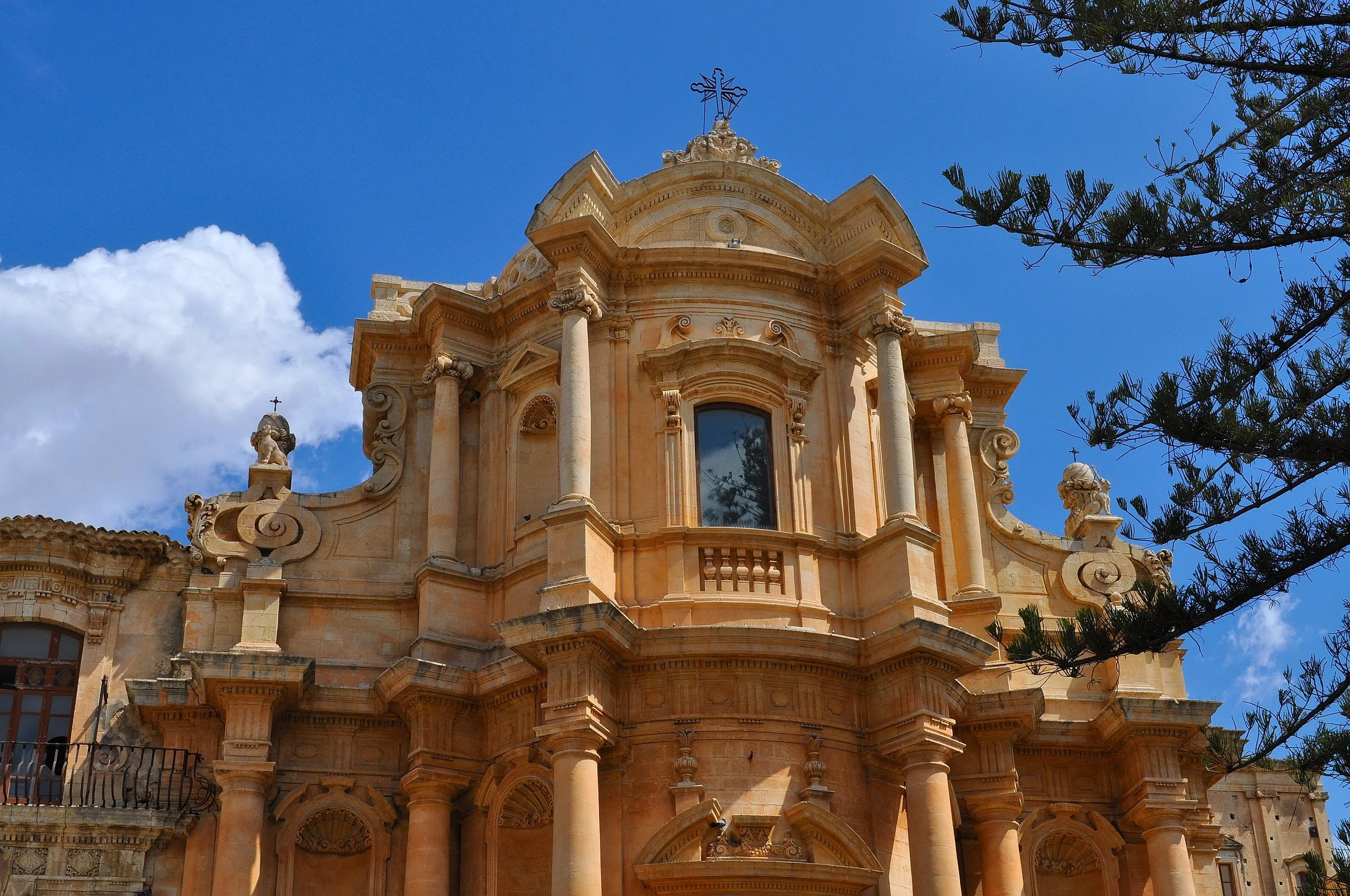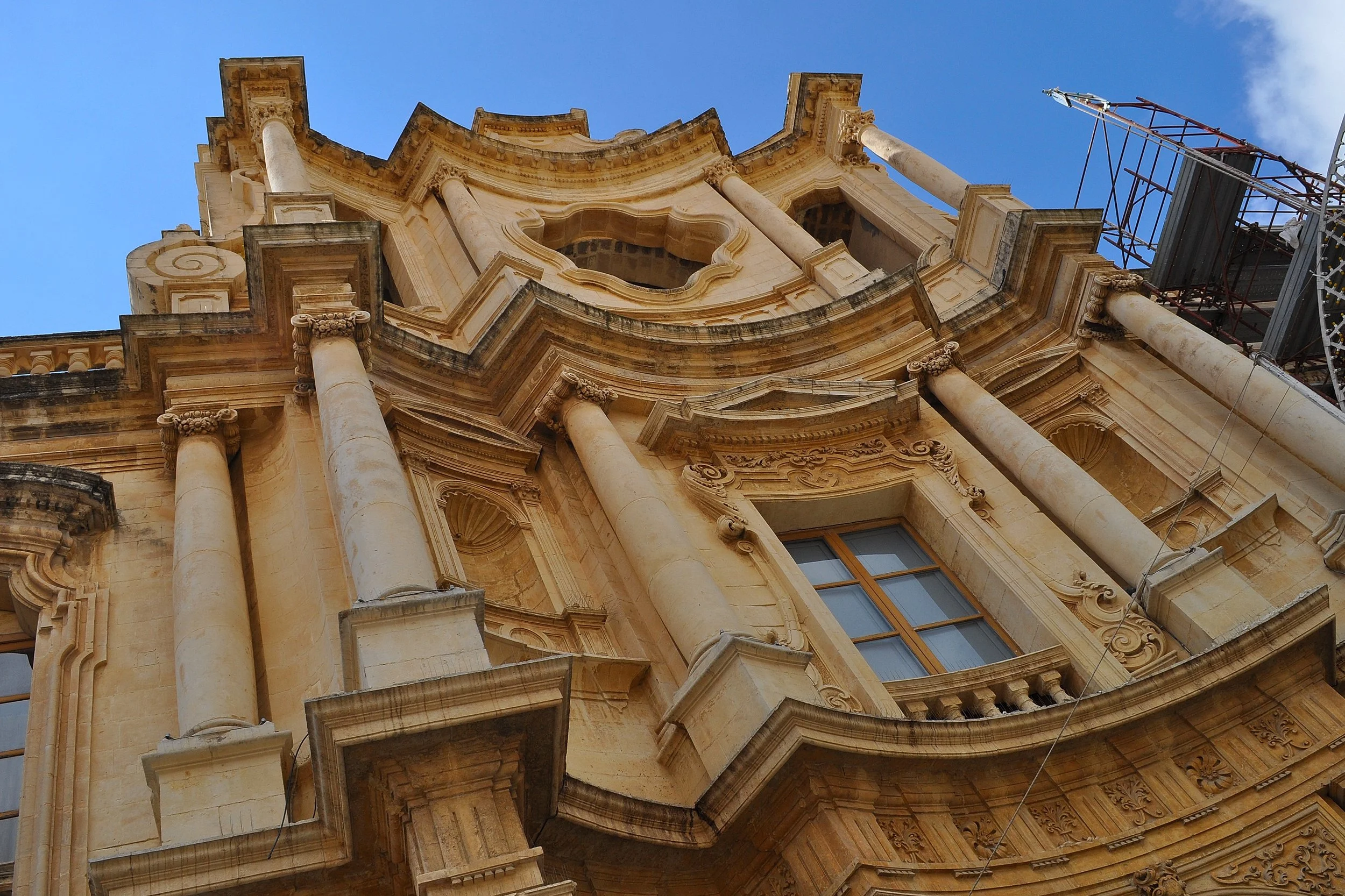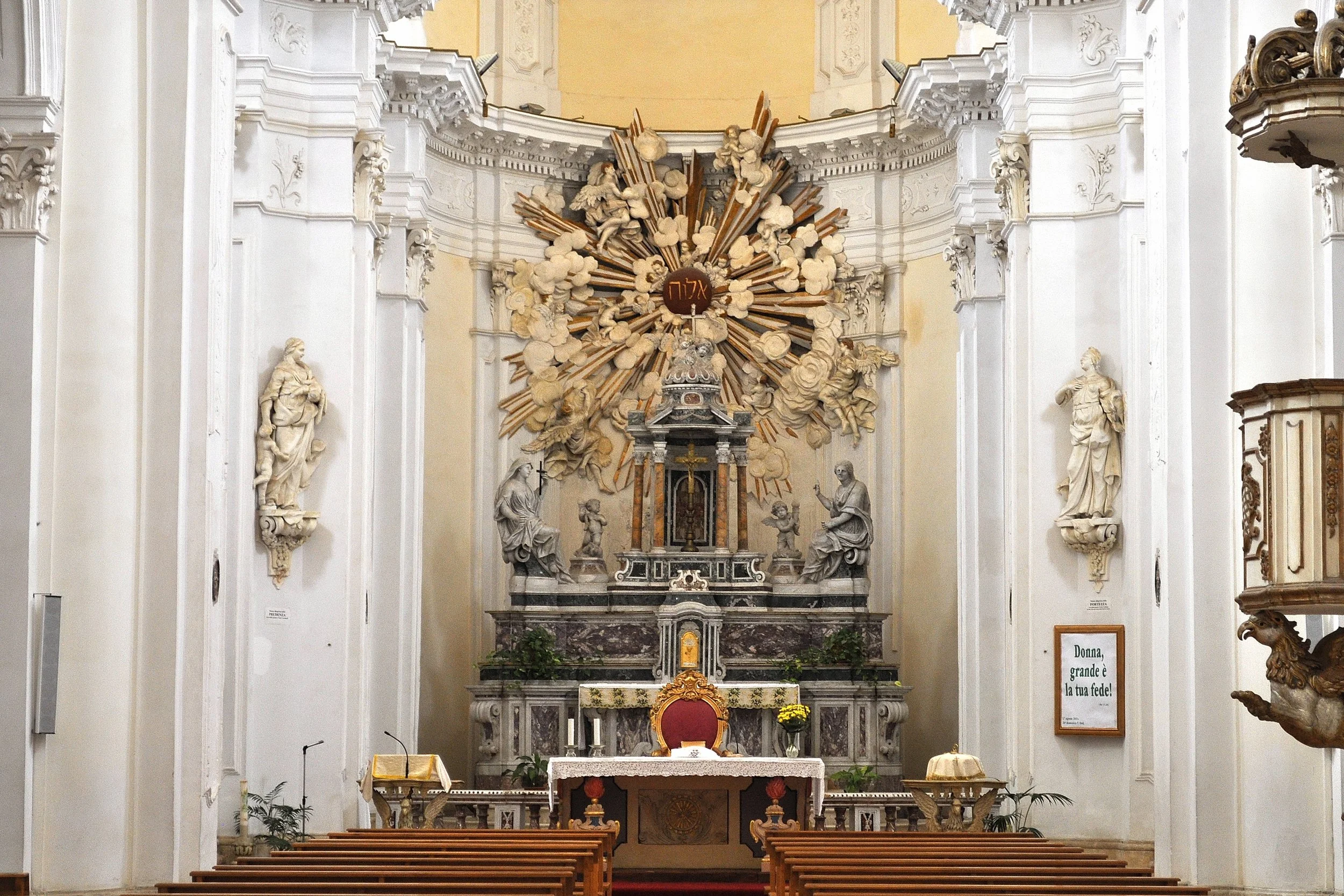Noto
Alberto: welcome back to Sicily, everyone! Another stop in this wonderful land.
Angela: here we are! Where are we going this time?
Alberto: ready for a new marvel? I’ll take you once again to discover Sicilian Baroque, right in its capital, another gem of Sicily, declared a UNESCO World Heritage site.
Piero: that’s easy: Noto!
Alberto: exactly! Hop in the van and follow me then.
Here we are in Noto!
Piero: finally, we’re here. Noto, the capital of Sicilian Baroque — what’s your first impression? Is it exactly as you imagined?
Angela: absolutely yes, actually, it’s even more majestic in person! The atmosphere is unique: wide streets, monumental palaces, it feels like stepping into another era. And the light! The limestone of the buildings reflects a warm golden glow I’ve never seen anywhere else.
Piero: the light here is truly unique, perfect for my passion for photography, thanks to the white stones used to build the city, which create this enchanting effect. Did you know that the Noto we see today is actually a city rebuilt after a terrible earthquake?
Angela: yes, of course, the 1693 earthquake that destroyed much of eastern Sicily — we talked about it when we were in Ragusa Ibla. The reconstruction of Noto, though, was a true work of art: the best architects of the time were called to redesign the city, and today we have this masterpiece of Baroque urban planning.
Piero: exactly, after the earthquake, the city was moved further down the valley, where it stands today. The reconstruction project transformed Noto into one of the finest examples of Baroque cities worldwide, with buildings that create perfect harmony.
Angela: before that disaster, there was an ancient Noto, perched on the Hyblaean Mountains, about eight kilometers north on Mount Alveria. Ancient Noto dates back to the early Bronze Age (3rd millennium BC). The name comes first from Greek, then Latinized as Netum — that’s why the inhabitants are called netini.
Piero: Greeks, Romans, and Arabs made Noto increasingly important; Normans and Aragonese succeeded each other over the centuries, from around 1000 AD until the earthquake. From the Arab domination up to the 19th century, Noto held strategic importance and was the main center of the valley, later losing this role to Syracuse. Until 1865, Noto was actually the provincial capital, then transferred to Syracuse.
Our walk through Noto
Angela: one day will be enough to discover the wonder of this city. Our starting point is the Porta Reale, or Ferdinandea, the historic entrance to Noto.
Piero: it is a monument built in 1838 on the occasion of the visit of the King of the Two Sicilies, Ferdinand II of Bourbon: since then, the Porta Reale has welcomed visitors, announcing the wonder, elegance, and charm of Noto.
Angela: from here begins Corso Vittorio Emanuele, the main street of Noto’s center. We immediately reach the first square, Piazza dell’Immacolata, where the church of San Francesco d'Assisi overlooks from the top of a beautiful staircase, alongside the imposing bell tower.
Piero: just a little further ahead is the beautiful church of Santa Chiara, officially called Chiesa di Santa Maria Assunta: although the facade is not among the most beautiful, its interior is truly splendid. Be careful because you don’t enter from the main street, but from a side street.
Angela: now we arrive at the most awaited moment of our visit, in Piazza Municipio, which hosts the symbol and the postcard of the city: the Cathedral of San Nicolò.
Piero: we are welcomed by the splendor of its majestic staircase and the facade that seems to reach the sky. The Baroque architecture here reaches its peak, with an incredible attention to detail and monumentality that takes your breath away. The facade was restored after the dome collapsed due to an earthquake in 1996: fortunately today, thanks to careful reconstruction, we can admire it in all its splendor.
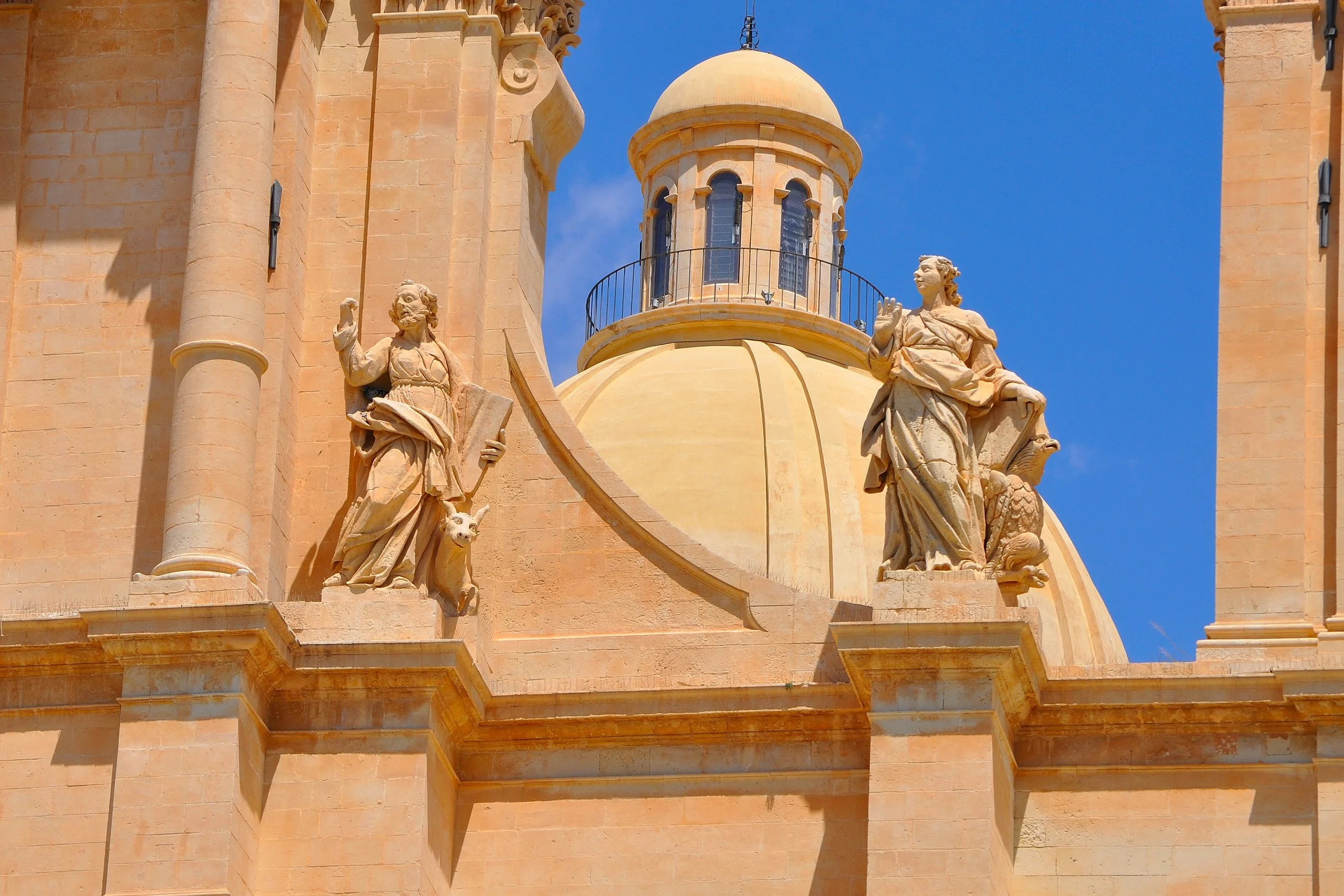

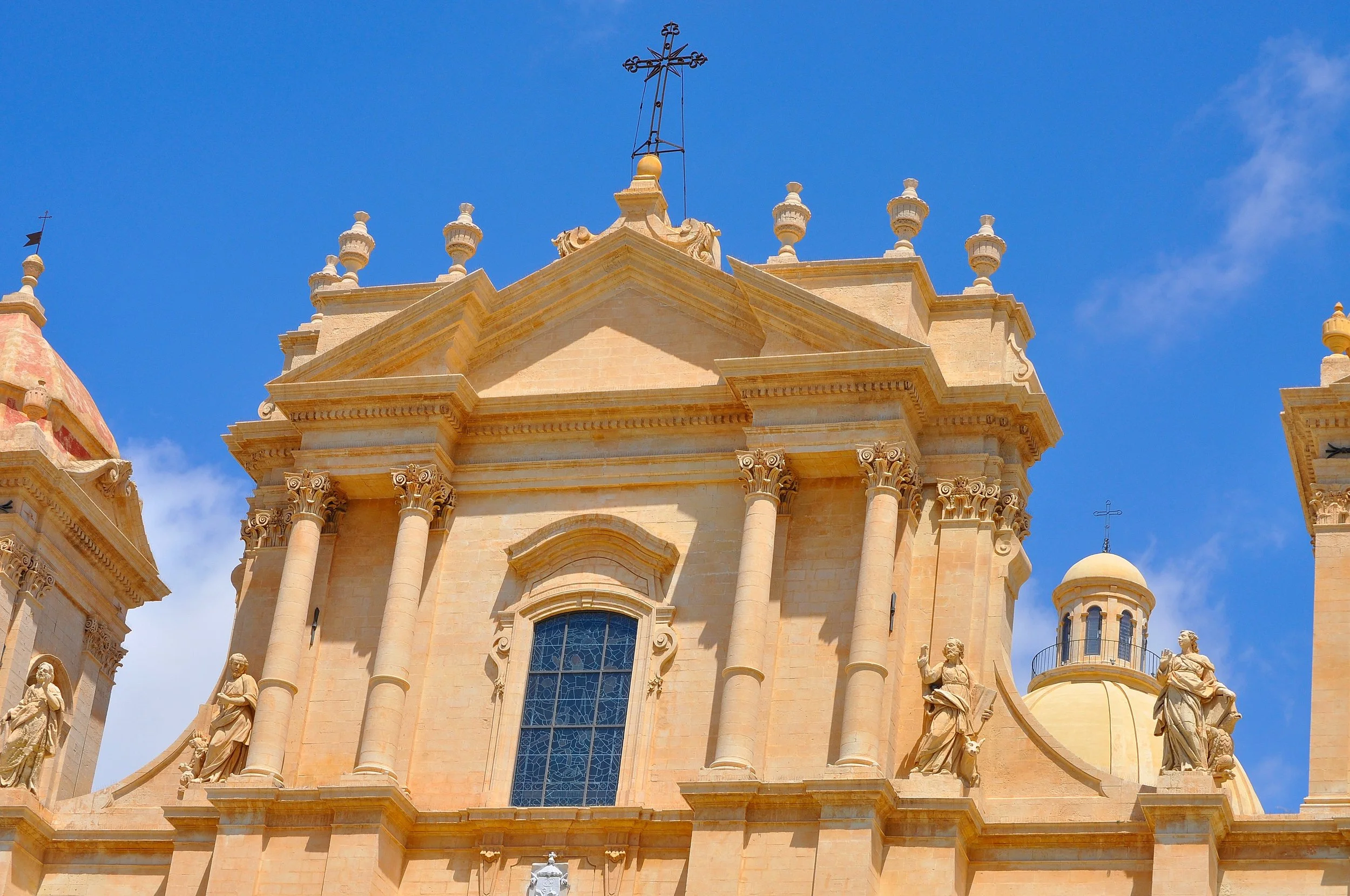
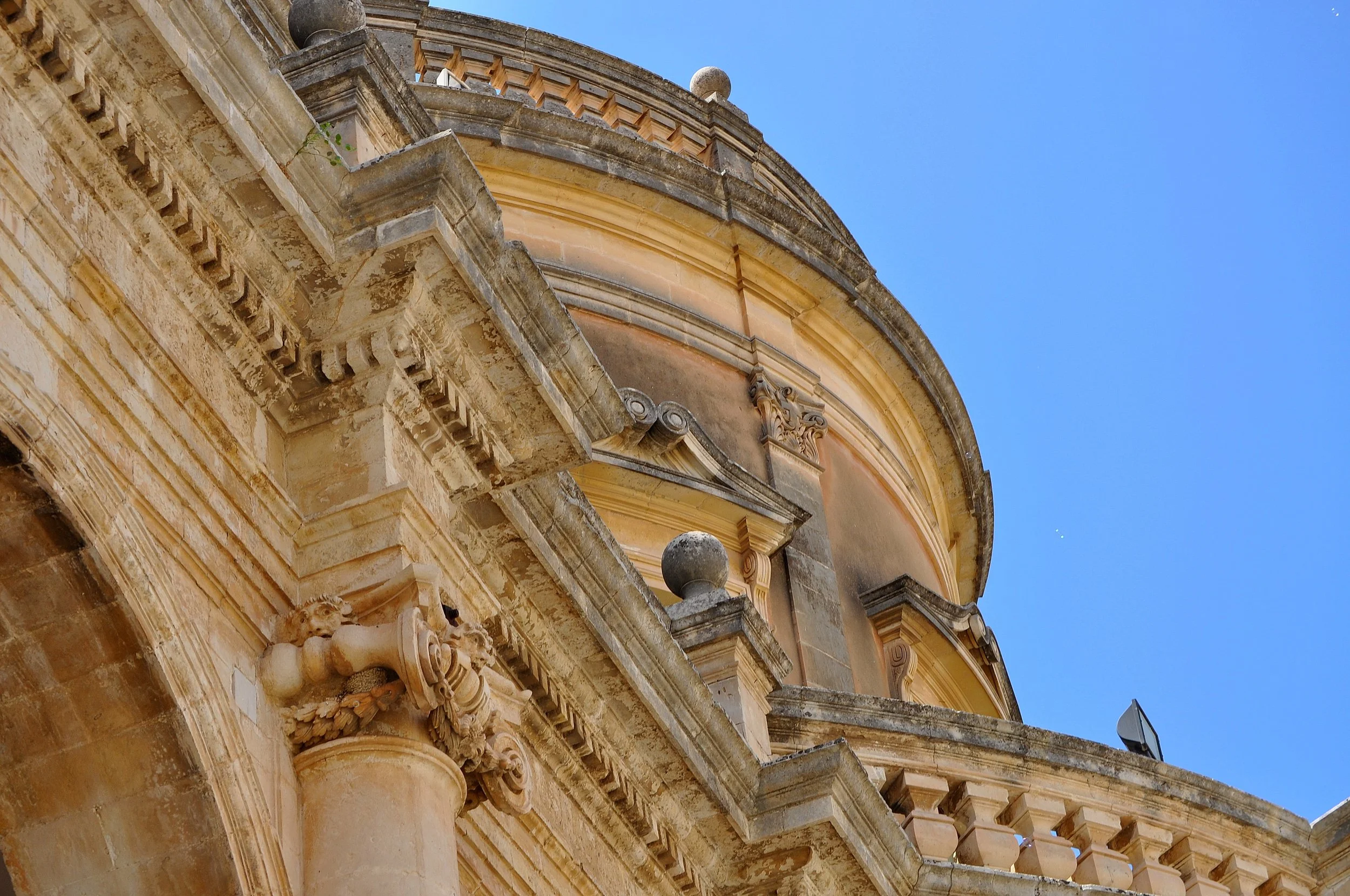

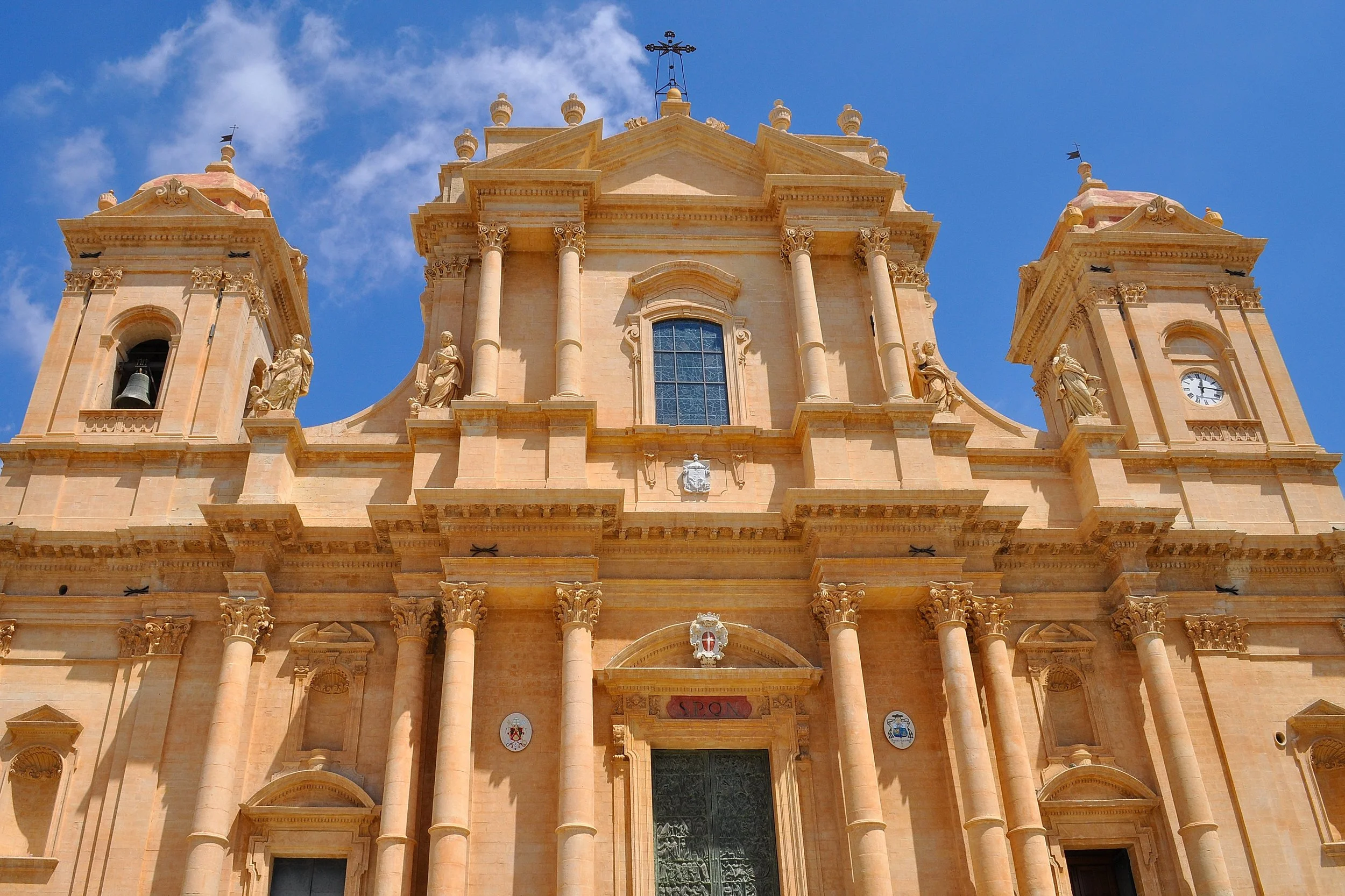
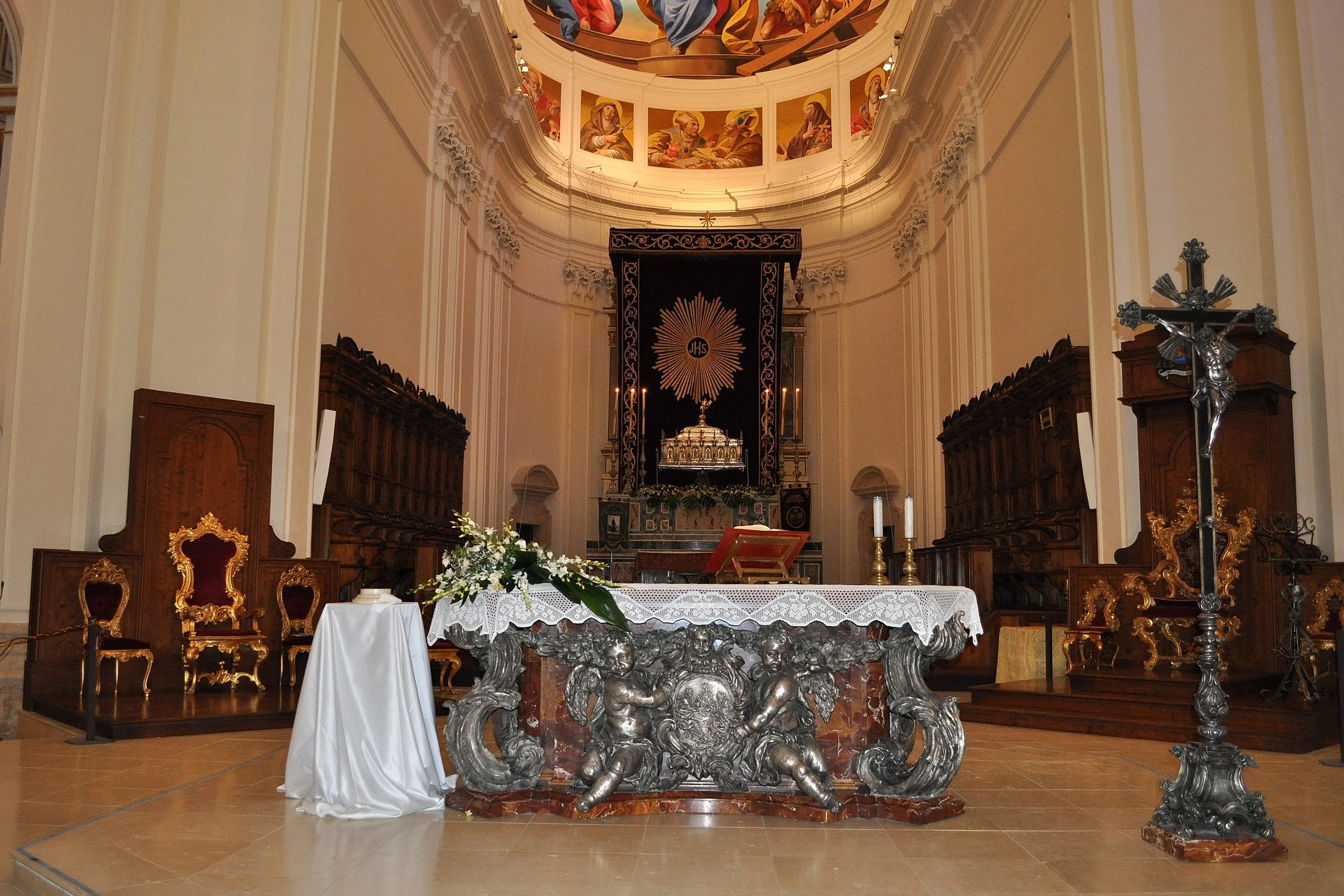
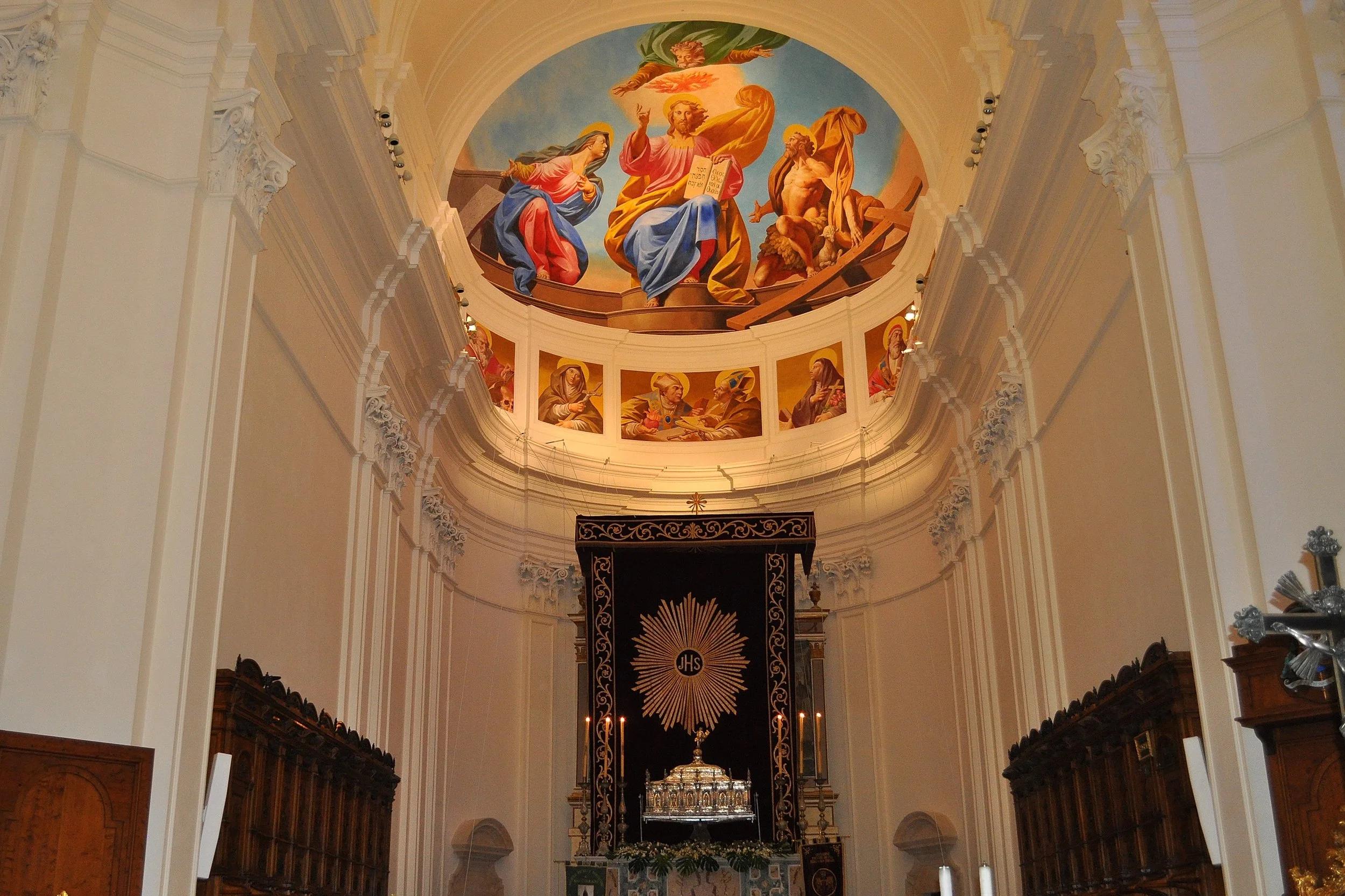

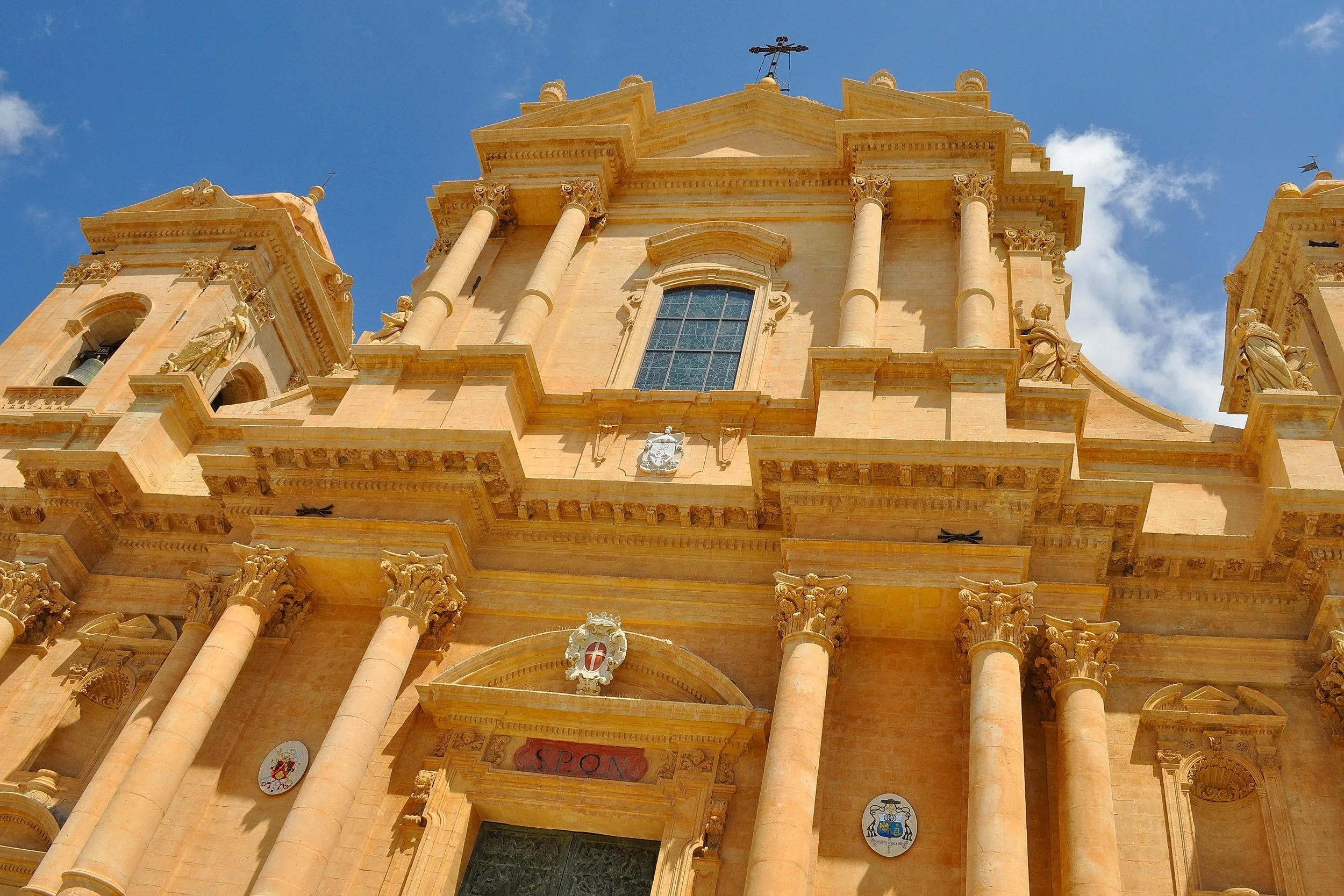
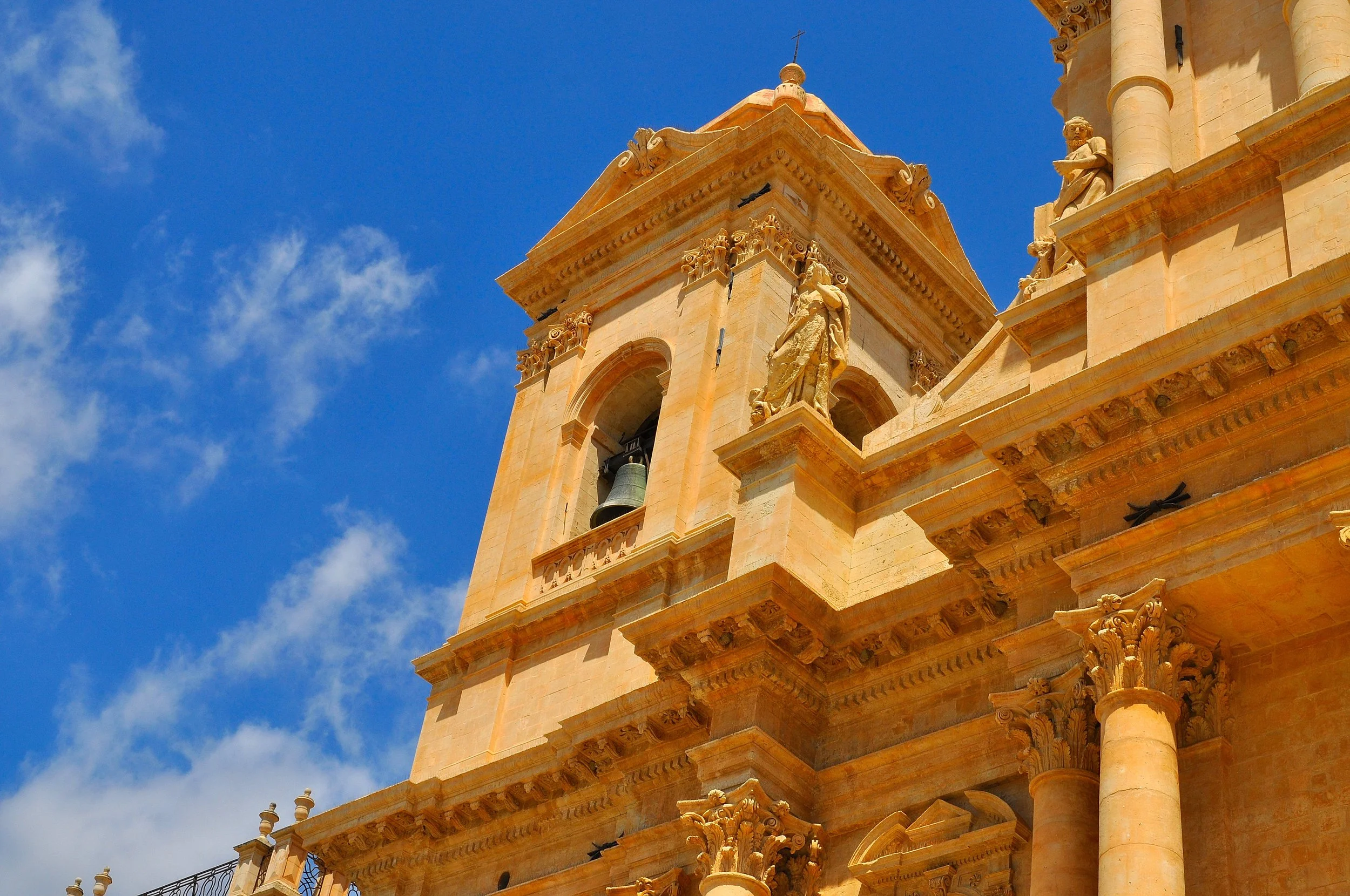

Alberto: the spectacular beauty of the church is certainly enhanced by the enormous staircase: both have surely been captured in almost every advertisement about Sicily. One of the most exciting and interesting moments for your photos is definitely the sunset, when the sun’s rays hit the stone, giving the Cathedral shades of red and orange that make it truly unique.
Angela: I’m always fascinated by how a religious building can represent so much about a community. Here you truly feel the devotion and the desire to create a symbol that lasts over time. I imagine it’s also a place for major religious events, right?
Piero: exactly. During the feast of San Corrado, the patron saint of Noto, the Cathedral becomes the beating heart of the city. The celebrations attract many faithful and tourists, creating moments of intense emotional participation. But beyond the Cathedral, Noto is full of spectacular buildings.
Angela: right in front of the Cathedral is Palazzo Ducezio, named after the important Roman leader linked to Noto’s ancient history and now the seat of the Municipality. It’s especially famous for the Hall of Mirrors, a richly decorated room with a visual effect that makes everything almost surreal. It’s also worth admiring the Cathedral from its panoramic terrace.
Piero: speaking of the panoramic terrace, it’s definitely worth visiting the Church of San Carlo al Corso, another splendid example of Baroque architecture, with balconies and terraces overlooking the square and the Cathedral, offering yet another magnificent panoramic viewpoint.
Angela: you absolutely can’t miss a visit to Via Nicolaci, which is home to a series of palaces representing the pinnacle of Baroque architecture. In particular, Palazzo Nicolaci di Villadorata is one of the most sumptuous and fascinating noble palaces in the entire city. All the Baroque palaces are adorned with balconies enriched with putti, statues of mythological figures, winged horses, lions, and mermaids, along with decorations of every kind and beautiful wrought iron railings—those of Palazzo Nicolaci are perhaps the most beautiful of all.
Piero: we’re approaching the end of the Corso and visit another gem of Noto: the Teatro Comunale, a small jewel from the 19th century. Moving from Baroque to Neoclassical, the theater is dedicated to Tina di Lorenzo, an actress from Noto. For its elegance and horseshoe shape with four tiers of boxes, it is often called the “miniature Scala of Milan.”
Angela: right opposite the theater is the last attraction we visited along Corso Vittorio Emanuele: in Piazza XVI Maggio stands the Church of San Domenico, with its splendid Baroque façade, characterized by beautiful columns and niches.
Living Noto
Angela: a place this rich must have very special traditions and festivals.
Piero: one of the most famous is definitely the Infiorata, held every year in May. The entire Via Nicolaci is transformed into a carpet of colorful flowers. Artists use flower petals to create incredible designs, often inspired by Sicilian culture or religious themes. It’s a celebration of beauty, creativity, and art.
Angela: it must be an unforgettable experience. Walking along those flower-covered streets, breathing in the scents, and admiring these temporary masterpieces must feel like a dream. But does the festival have religious roots or is it purely artistic?
Piero: it’s a bit of both. The Infiorata is linked to spring celebrations and religious devotion, but it also has a strong artistic character. Sicily is famous for blending the sacred and the profane in its festivals. Plus, the whole community takes part: it’s a way to feel united and celebrate beauty together.
Angela: you know, after walking these streets and soaking up the history, I really want to explore another part of Sicilian culture: the food! What must we absolutely try here in Noto?
Piero: here in Noto, you can’t miss the scacce, a kind of stuffed focaccia typical of this area. But there’s also pasta alla norma, made with fried eggplants, tomato sauce, and ricotta salata. A true Sicilian delight.
Angela: and what about sweets? I’ve heard Sicilian pastry is some of the best in the world.
Piero: absolutely! Noto is famous for its almond production, so you definitely have to try the almond granita, perfect on hot Sicilian days. And of course, the cannoli and cassata. But a little-known gem is the honey from Noto, used in many local recipes.
Angela: almond granita, cannoli, honey… you’re making my mouth water! I imagine these small historic pastry shops hold truly authentic flavors.
Goodbye Noto!
Piero: Noto is not just a city for tourists. Life here flows slowly and peacefully. People are welcoming and deeply connected to traditions. Walking through the streets means meeting people chatting with each other, who know and greet one another. It’s as if the city lives in a world of its own.
Angela: I’m noticing that too. There’s a kind of calm that envelops you, even right in the city center. Noto seems made for those who love to take their time and enjoy every moment. There’s no rush, no strict schedules. It’s as if the city invites you to slow down.
Piero: here you can sit in a café, enjoy a coffee or a granita, and watch life flow around you. There’s no need to hurry, because every corner of Noto deserves to be explored slowly. And this sense of community is one of the things that makes Noto so special.
Angela: that’s exactly what I was looking for on this trip. Not just to see the monuments, but to live the city, to breathe its atmosphere. And Noto is the perfect place to do that. The history, the beauty, the kindness of the people… it’s like everything combines to create a unique experience.
Alberto: I’m glad Noto impressed you so much. It’s a city that stays in your heart, and every time you come back here, you find something new to discover. That’s why I invite you to come back again.
Piero: we definitely will! Meanwhile, to discover the timeless charm of Noto, enjoy the wonder of our walk in this video.

